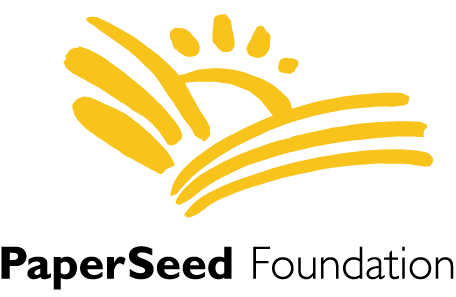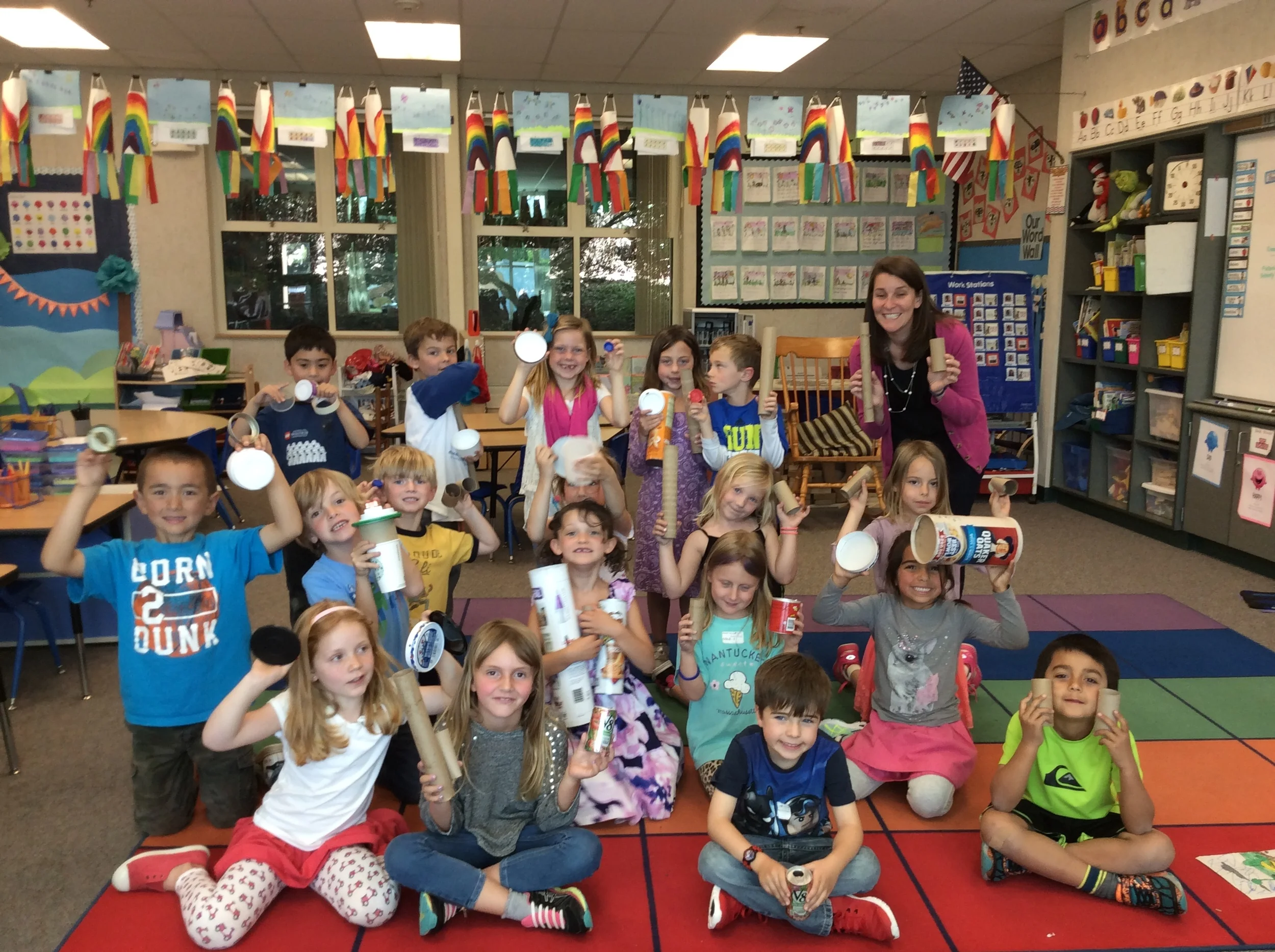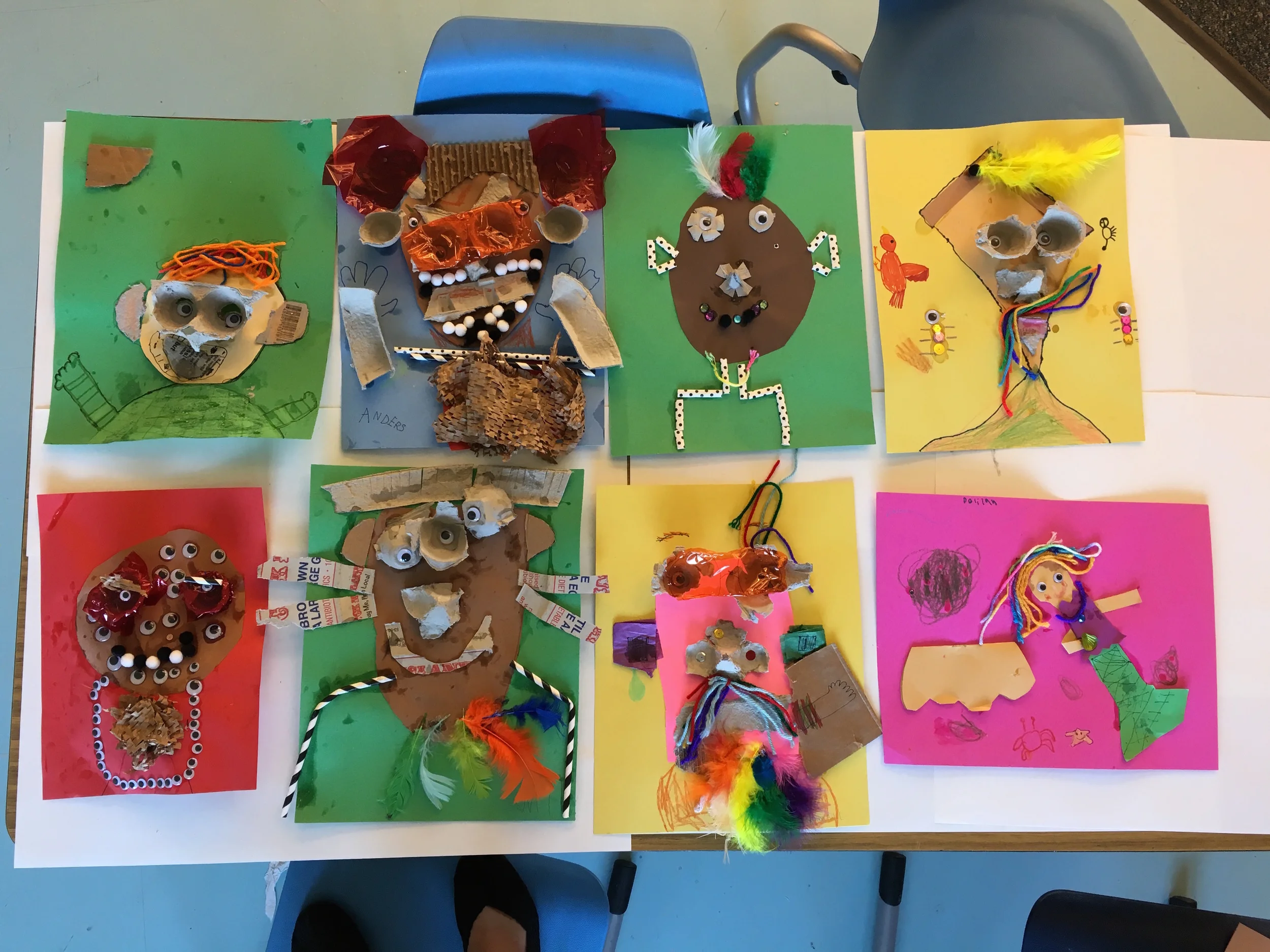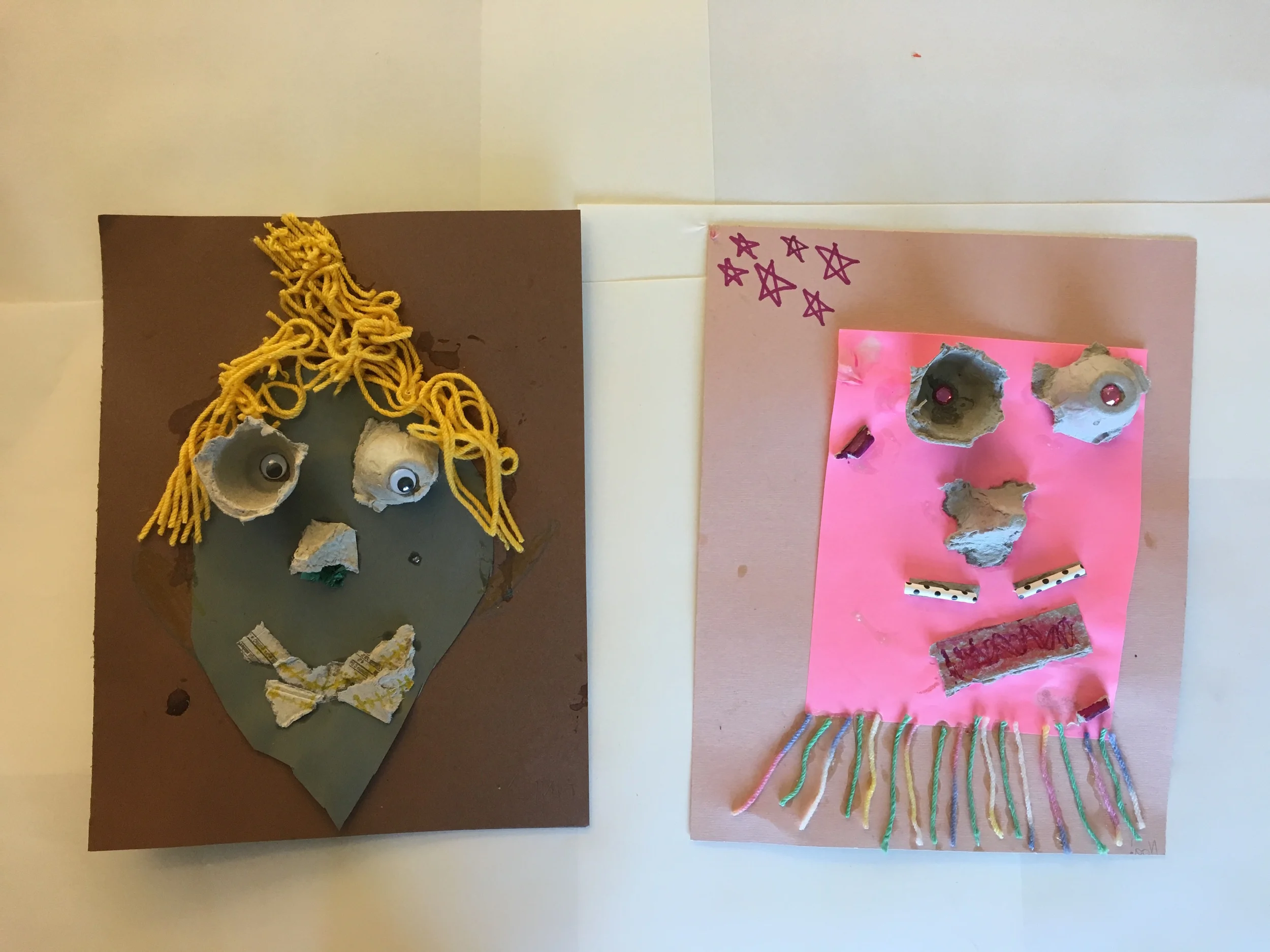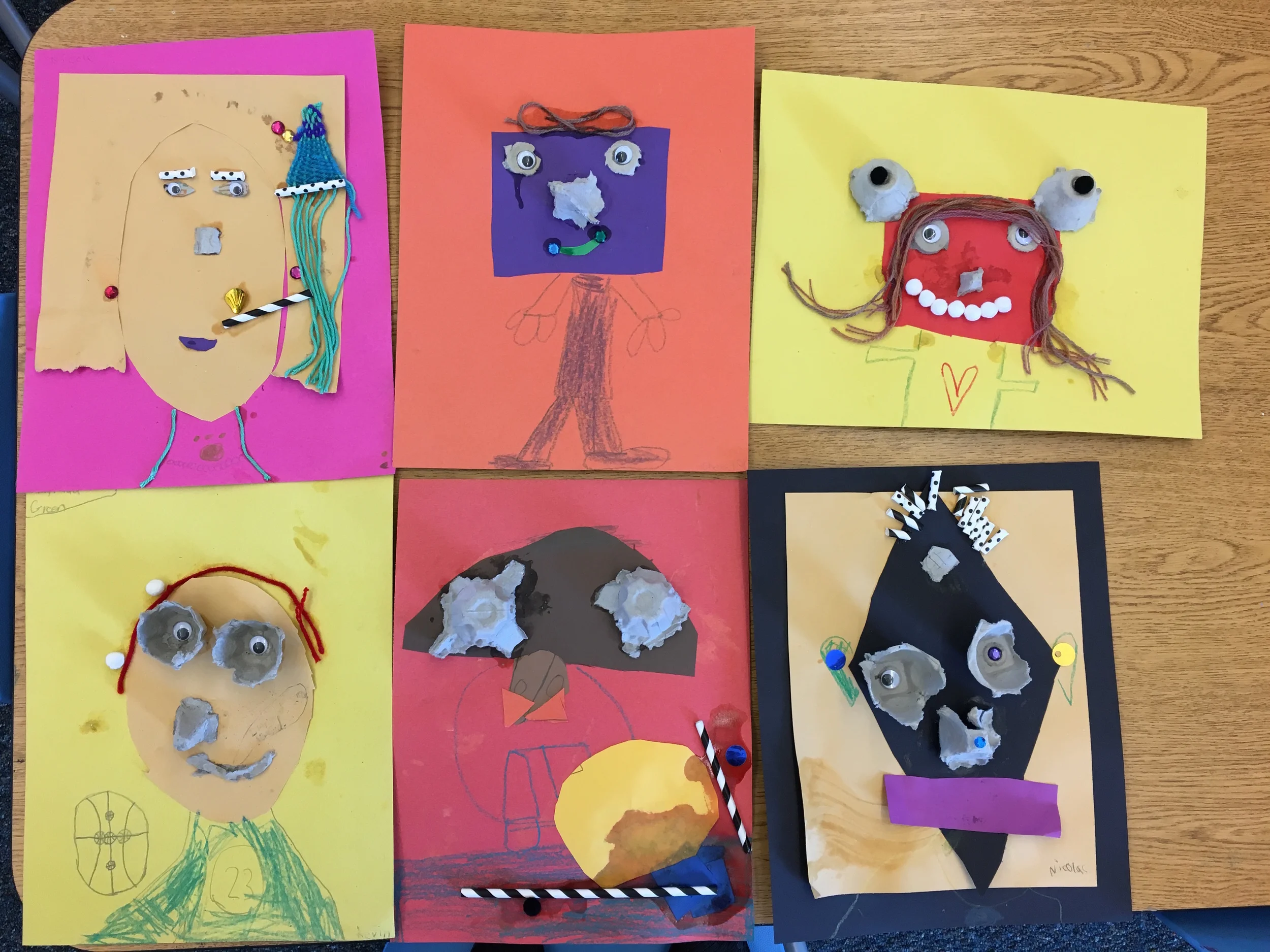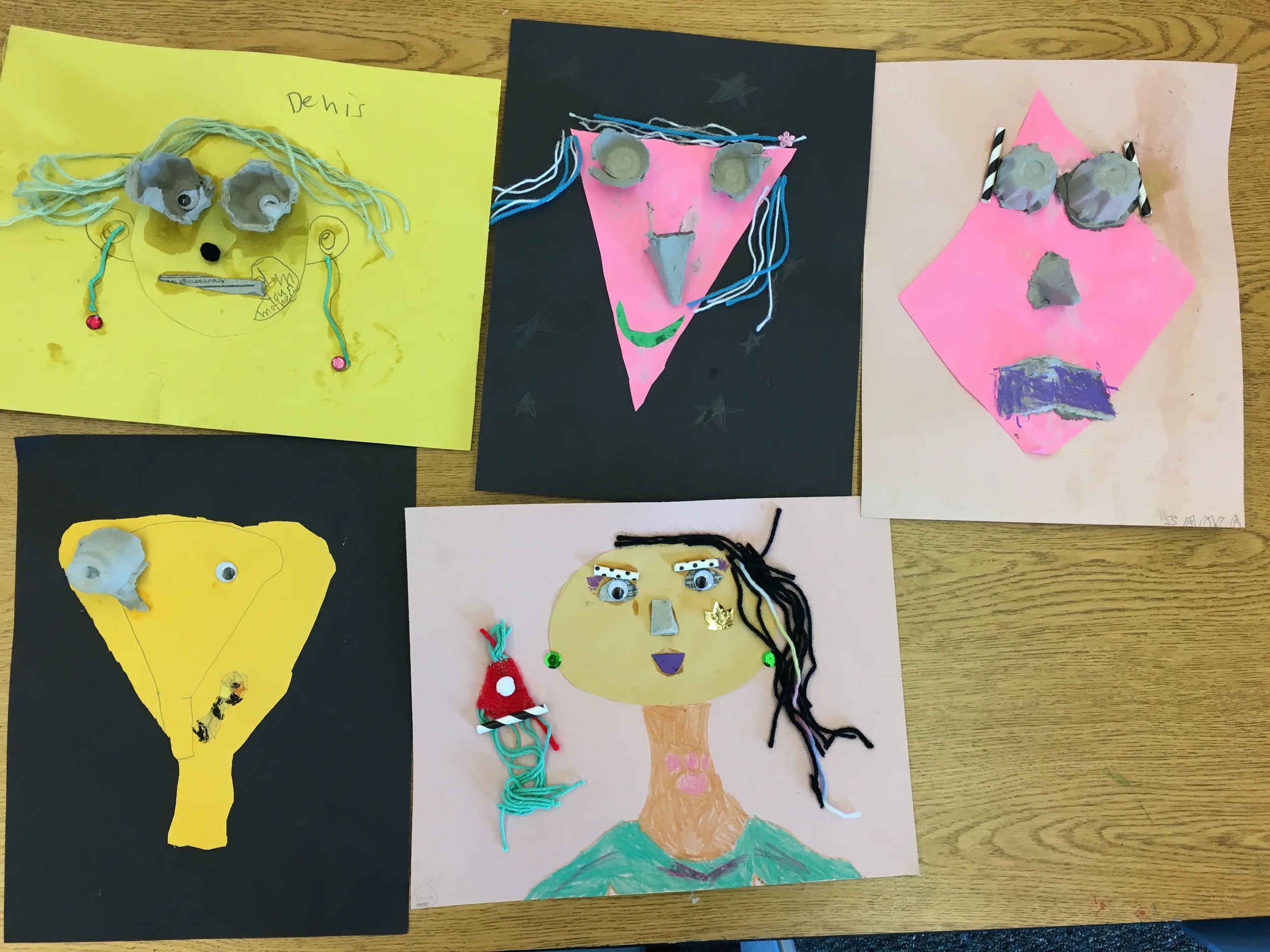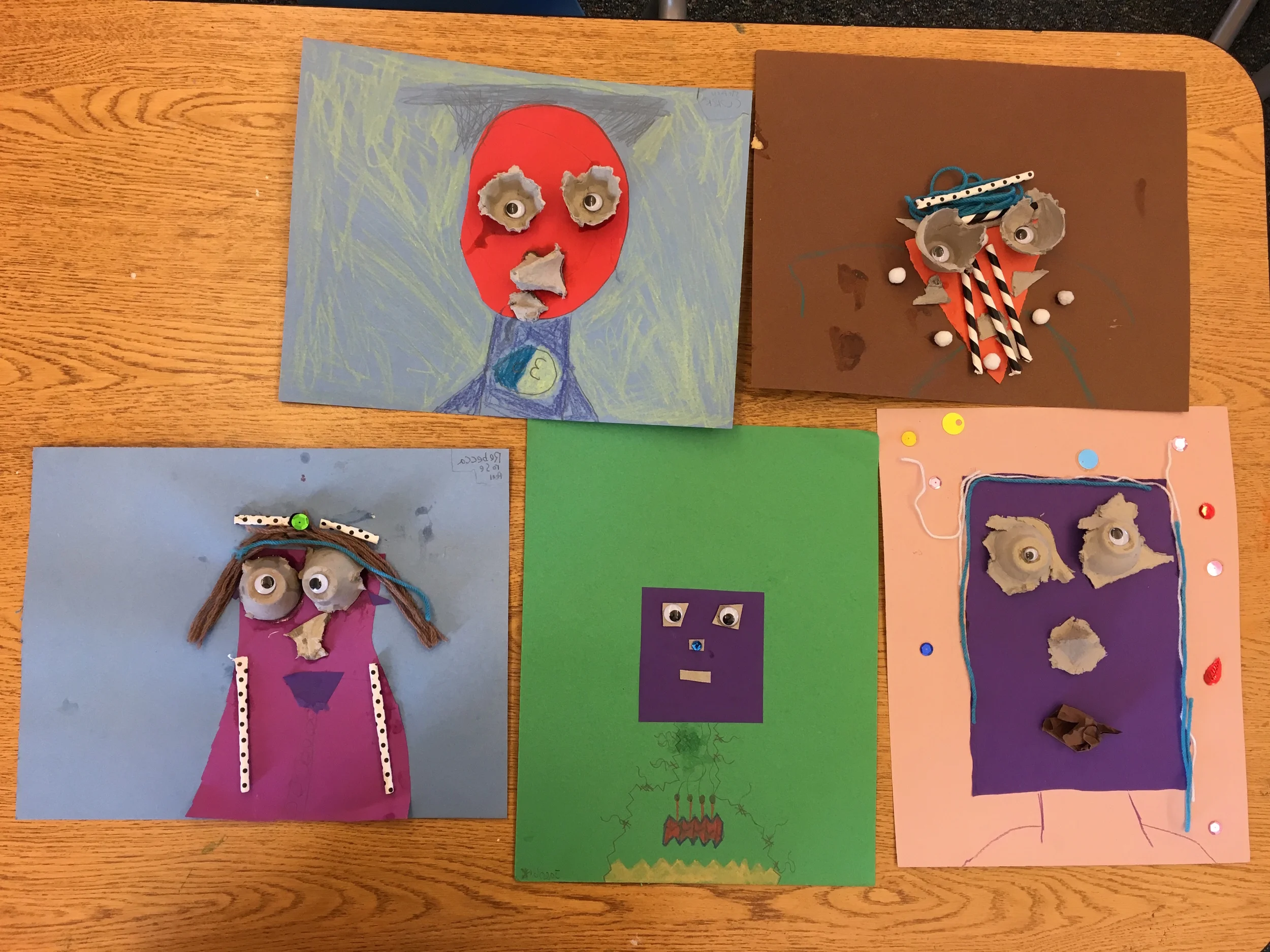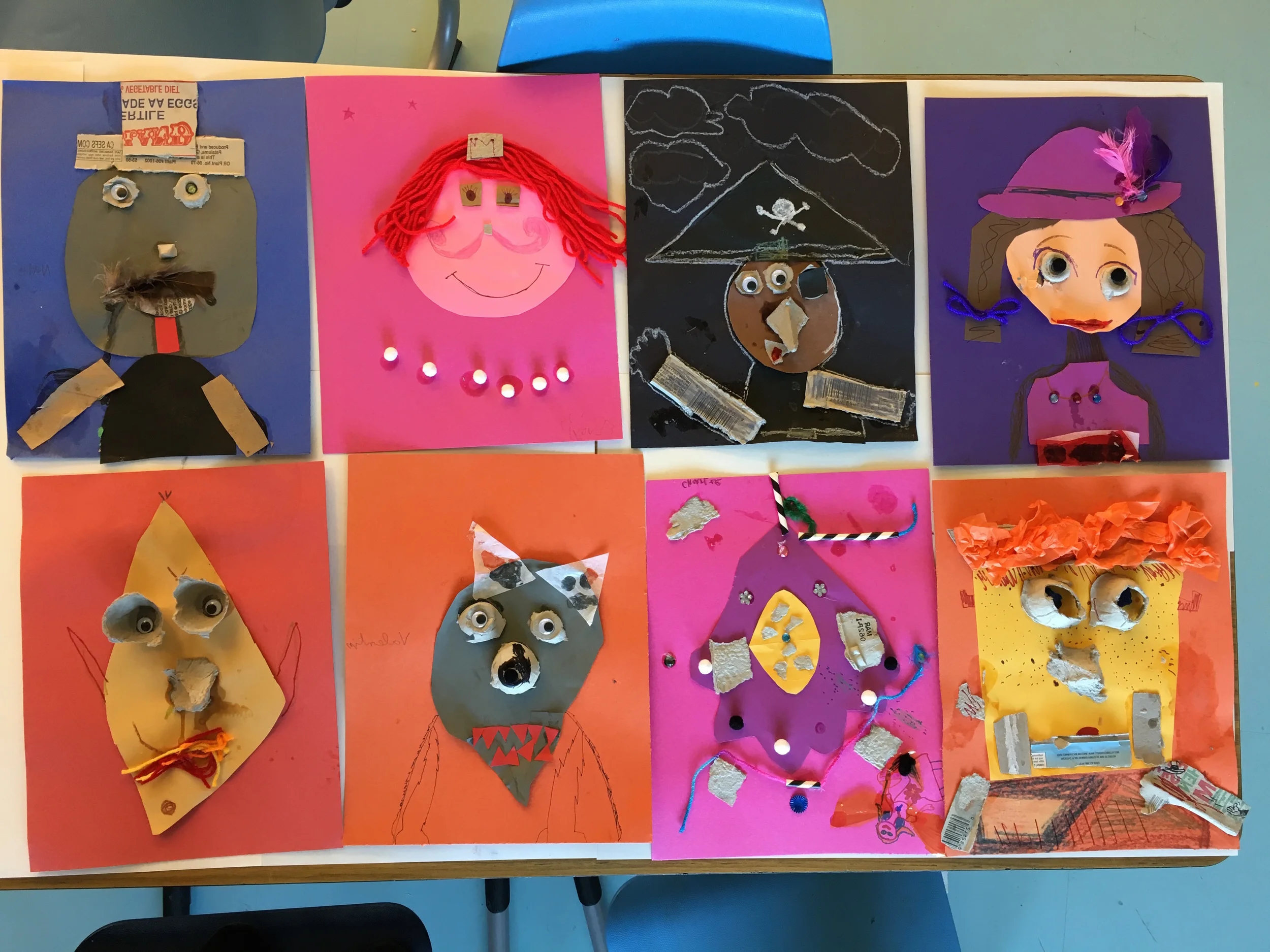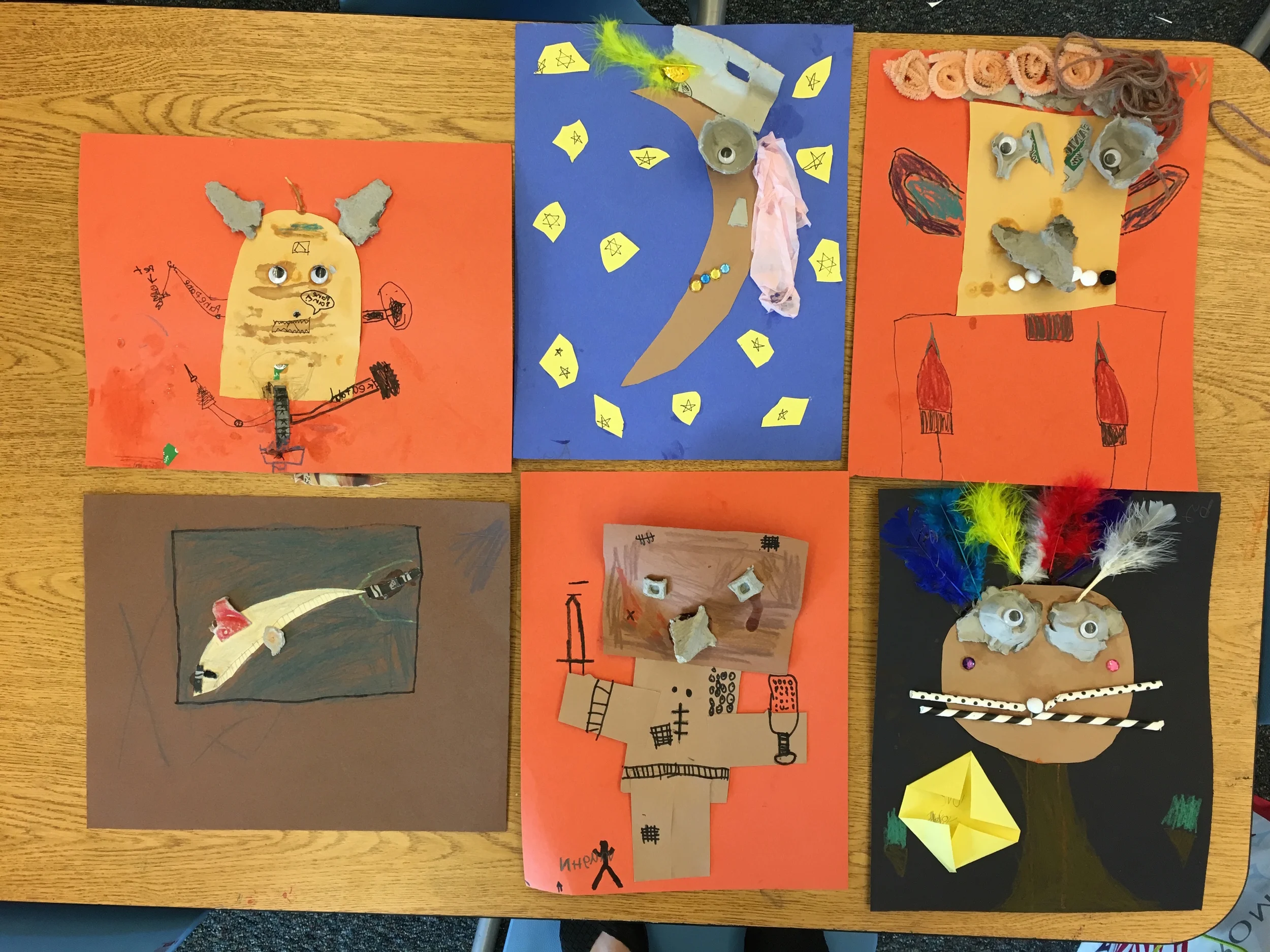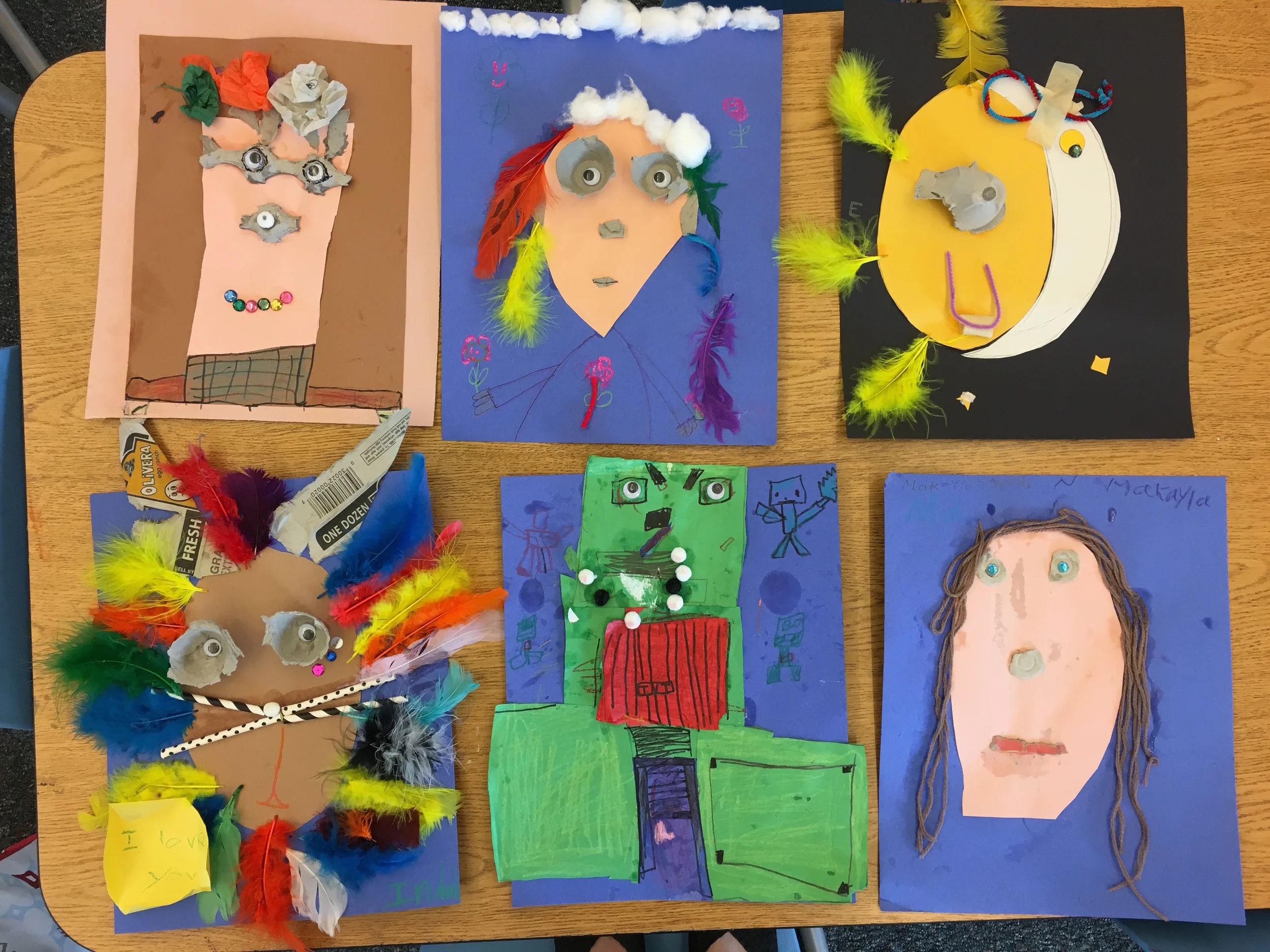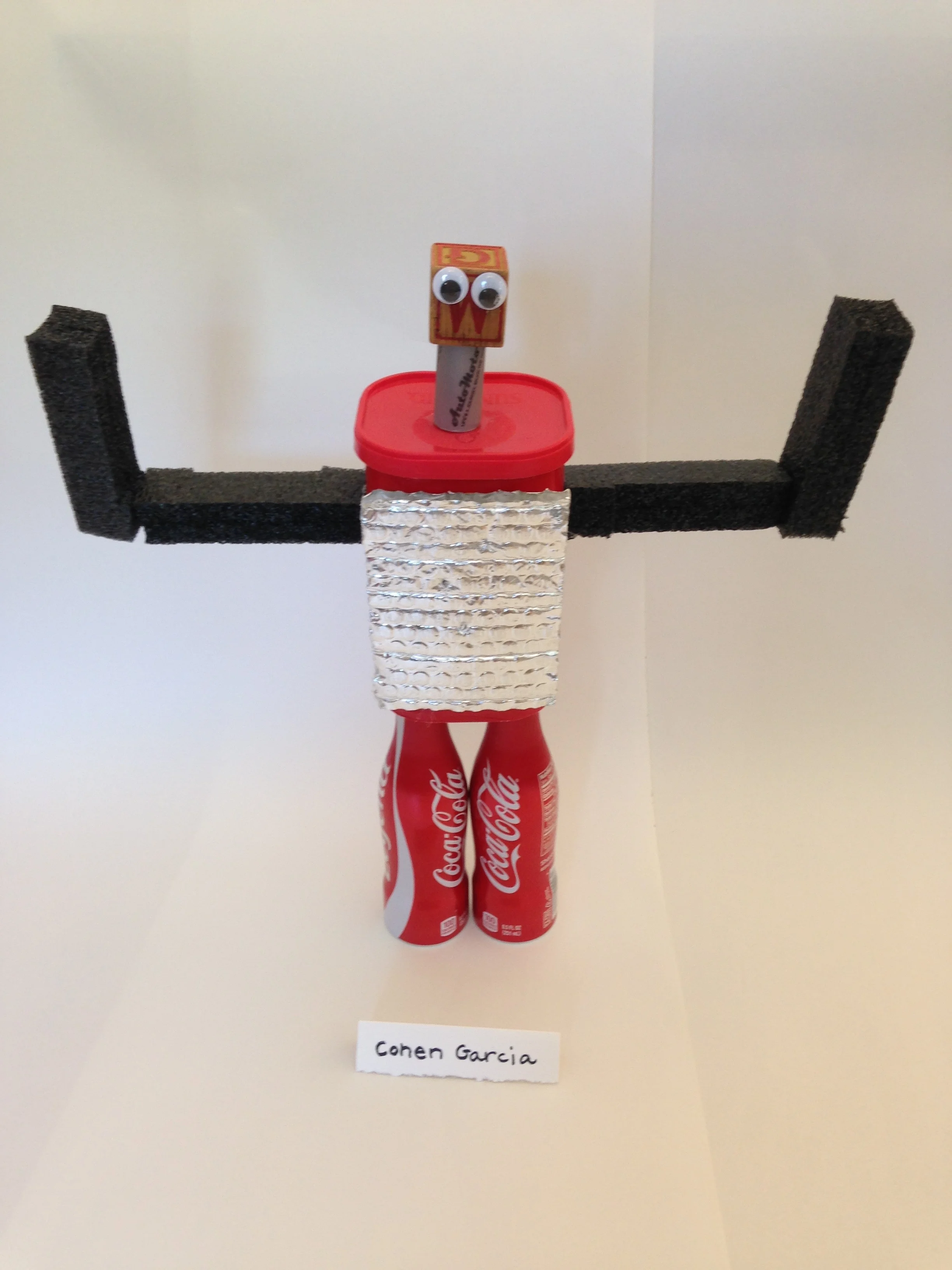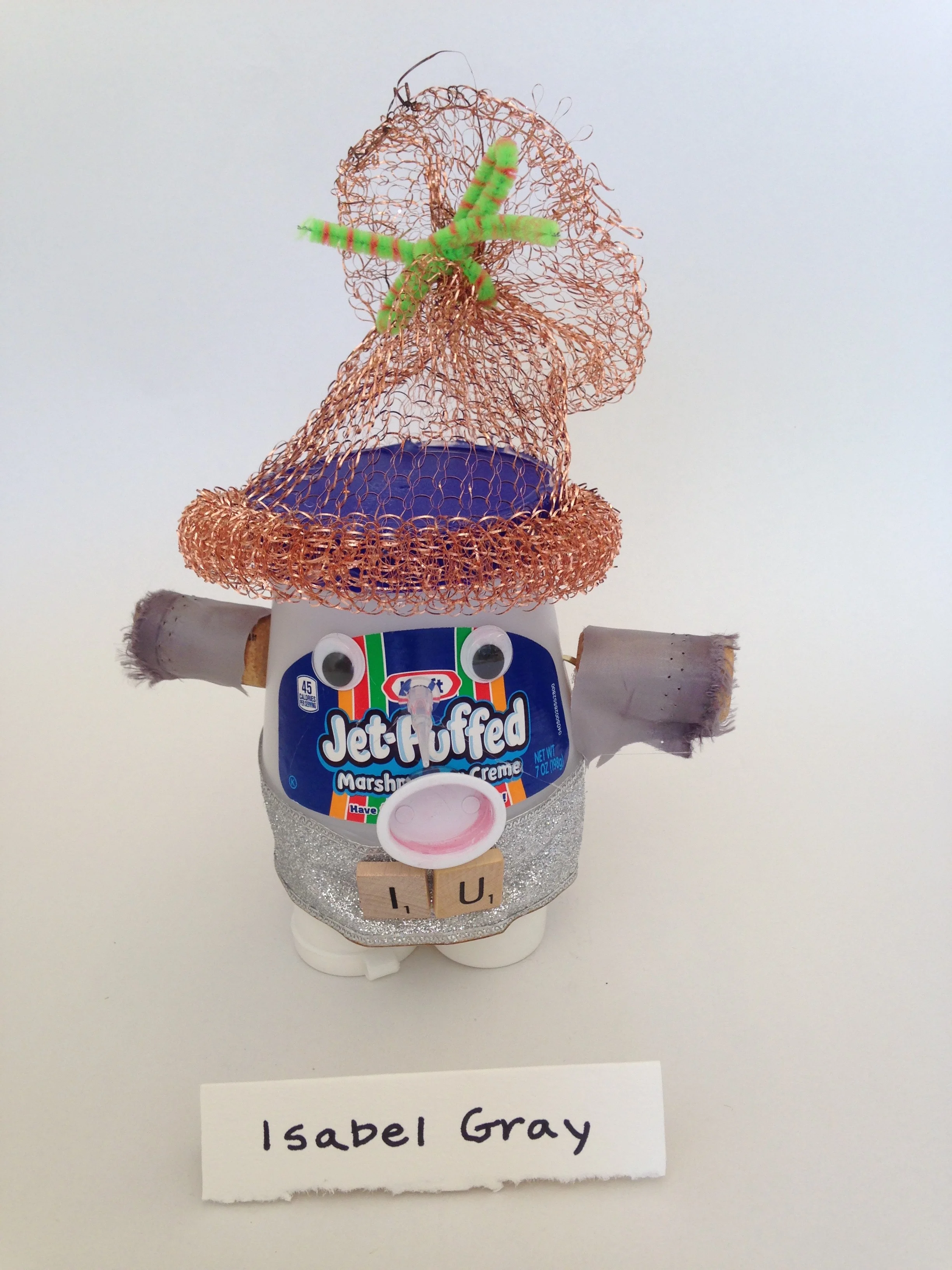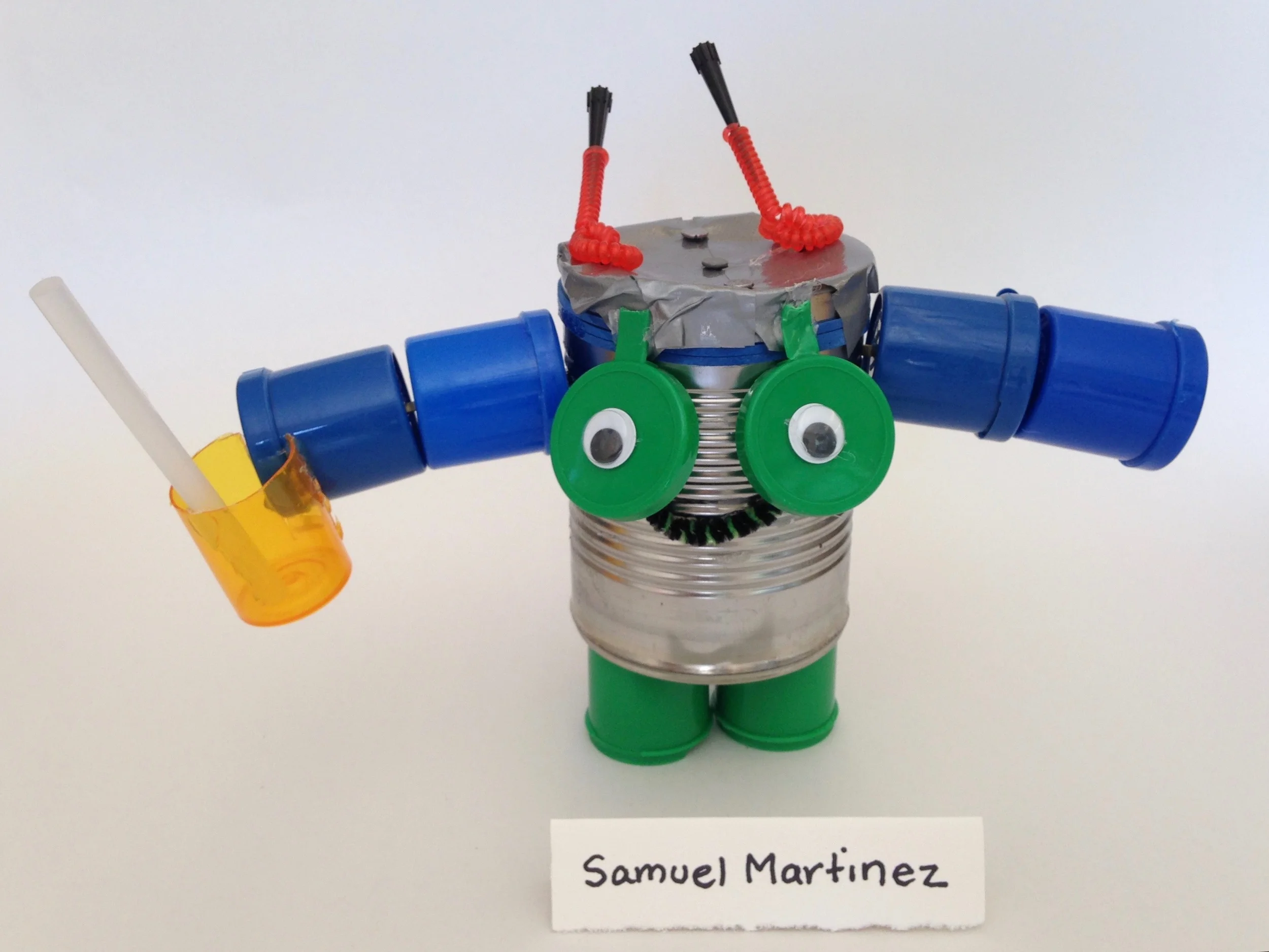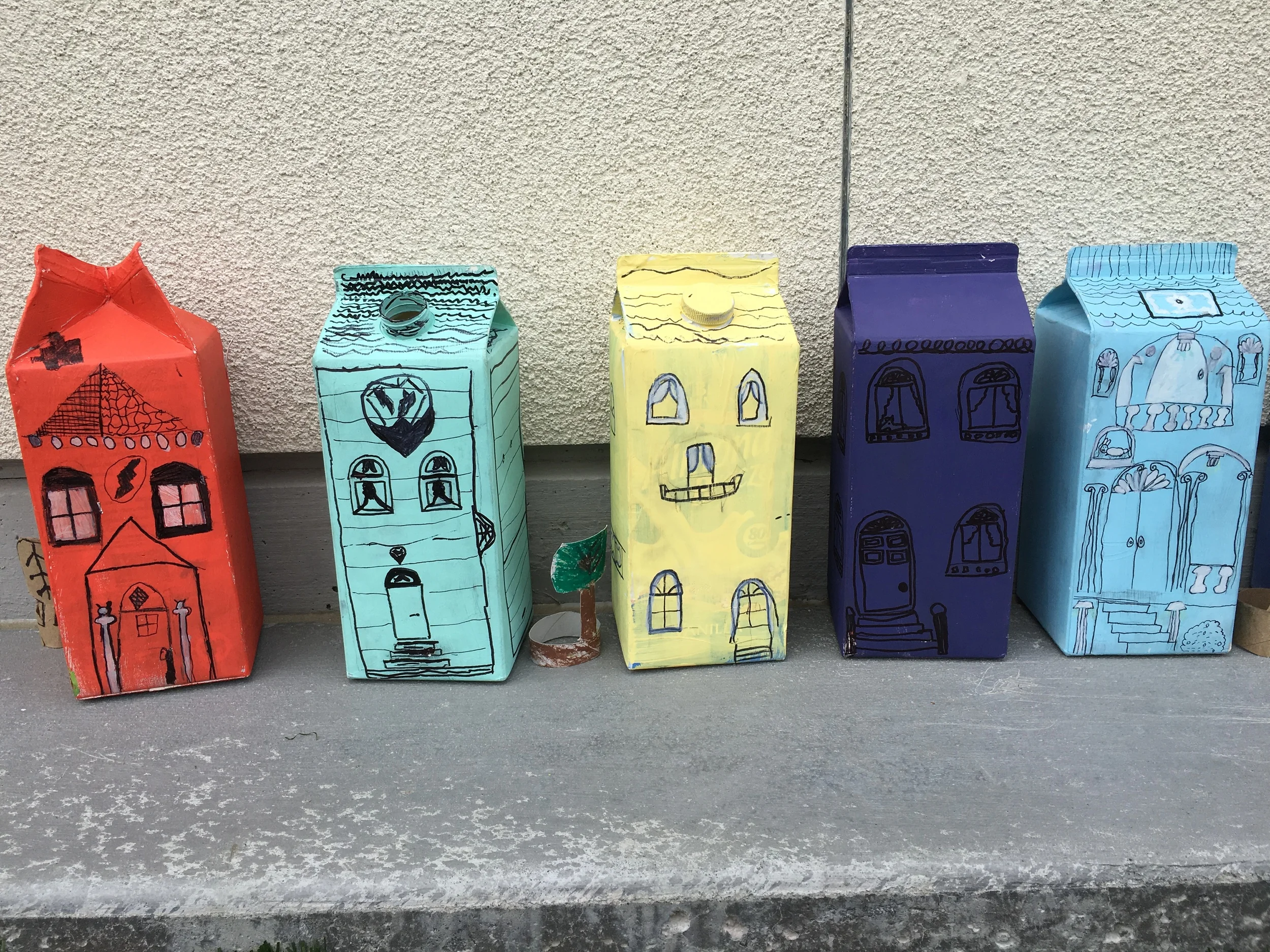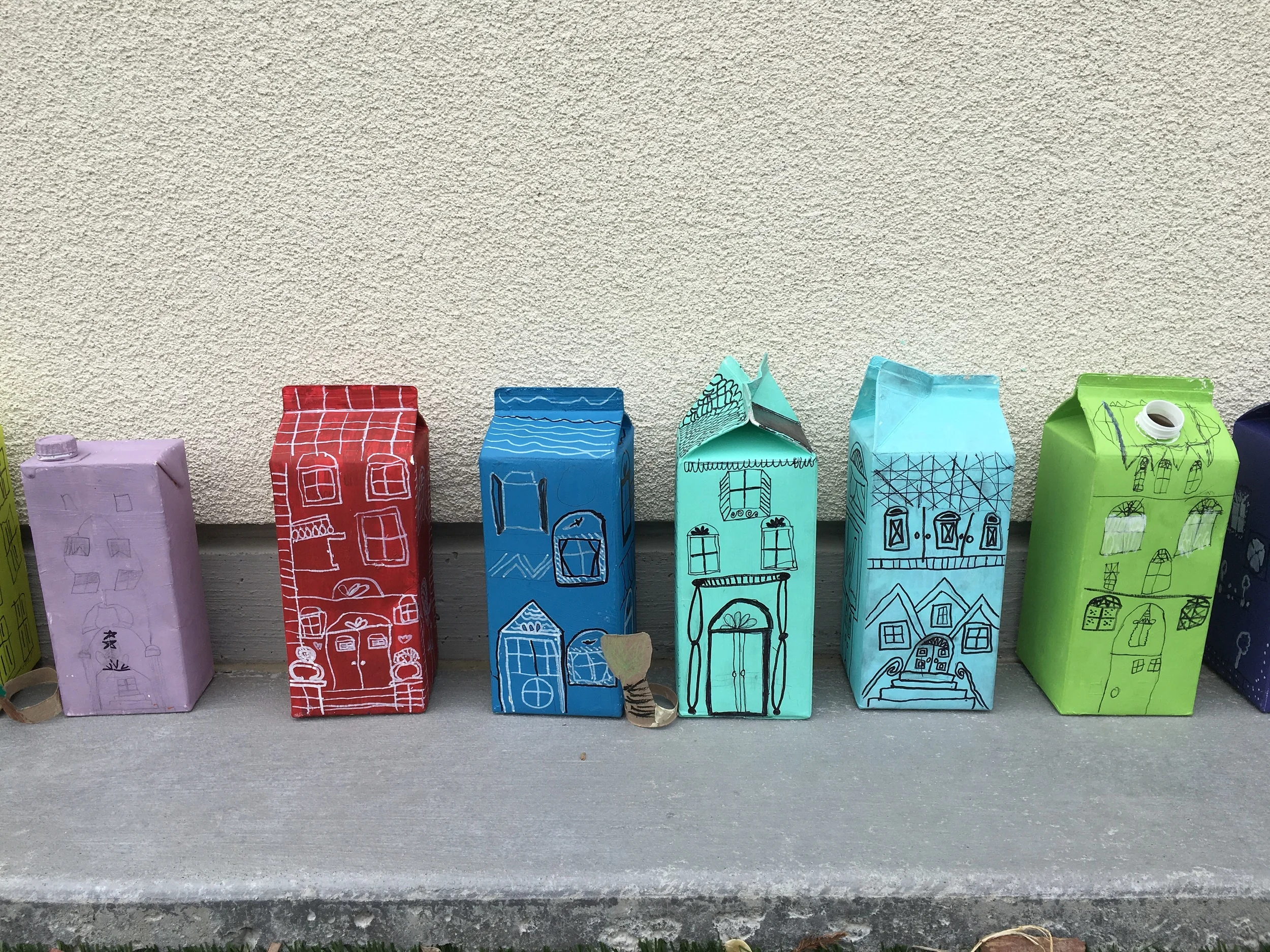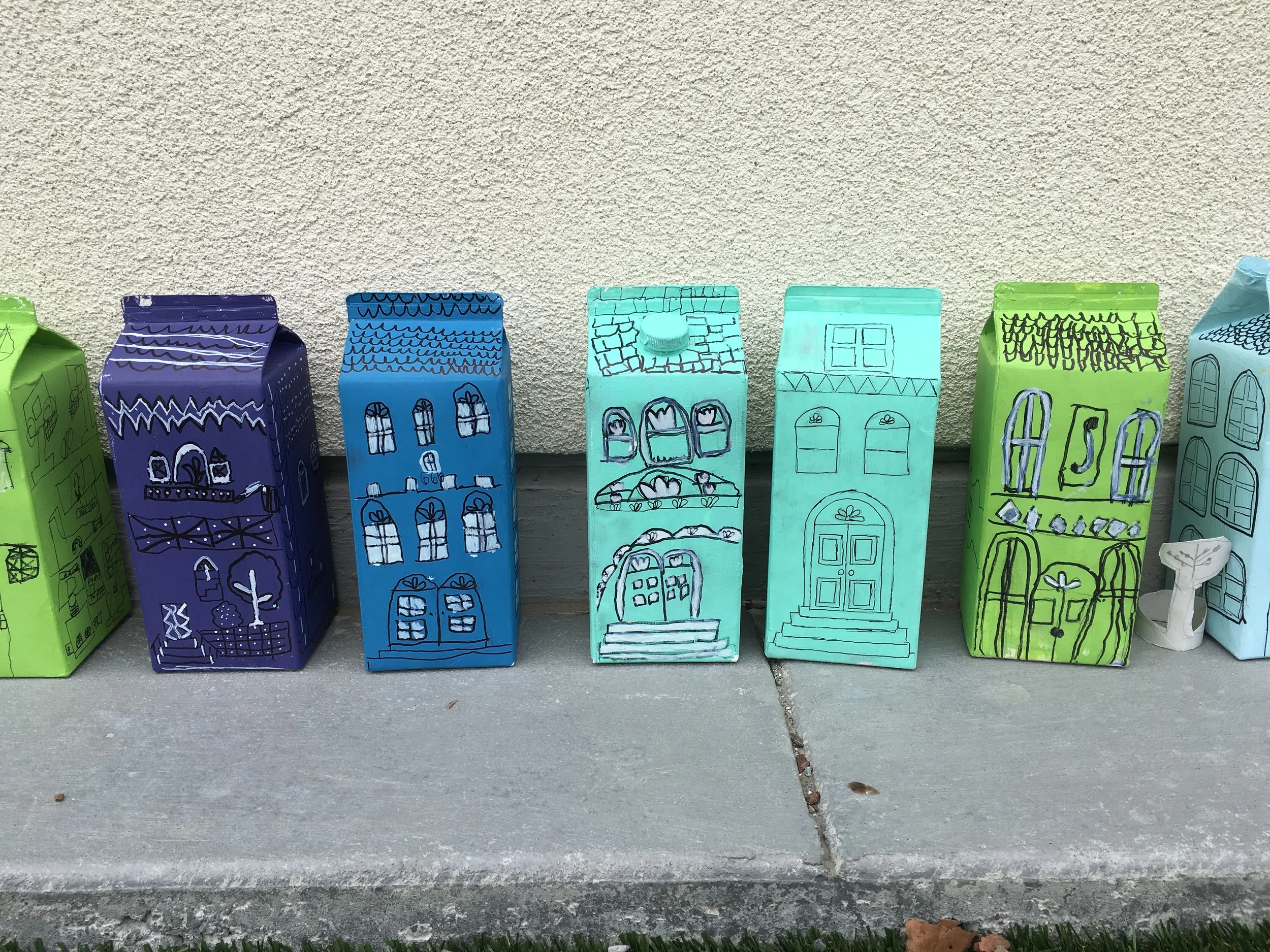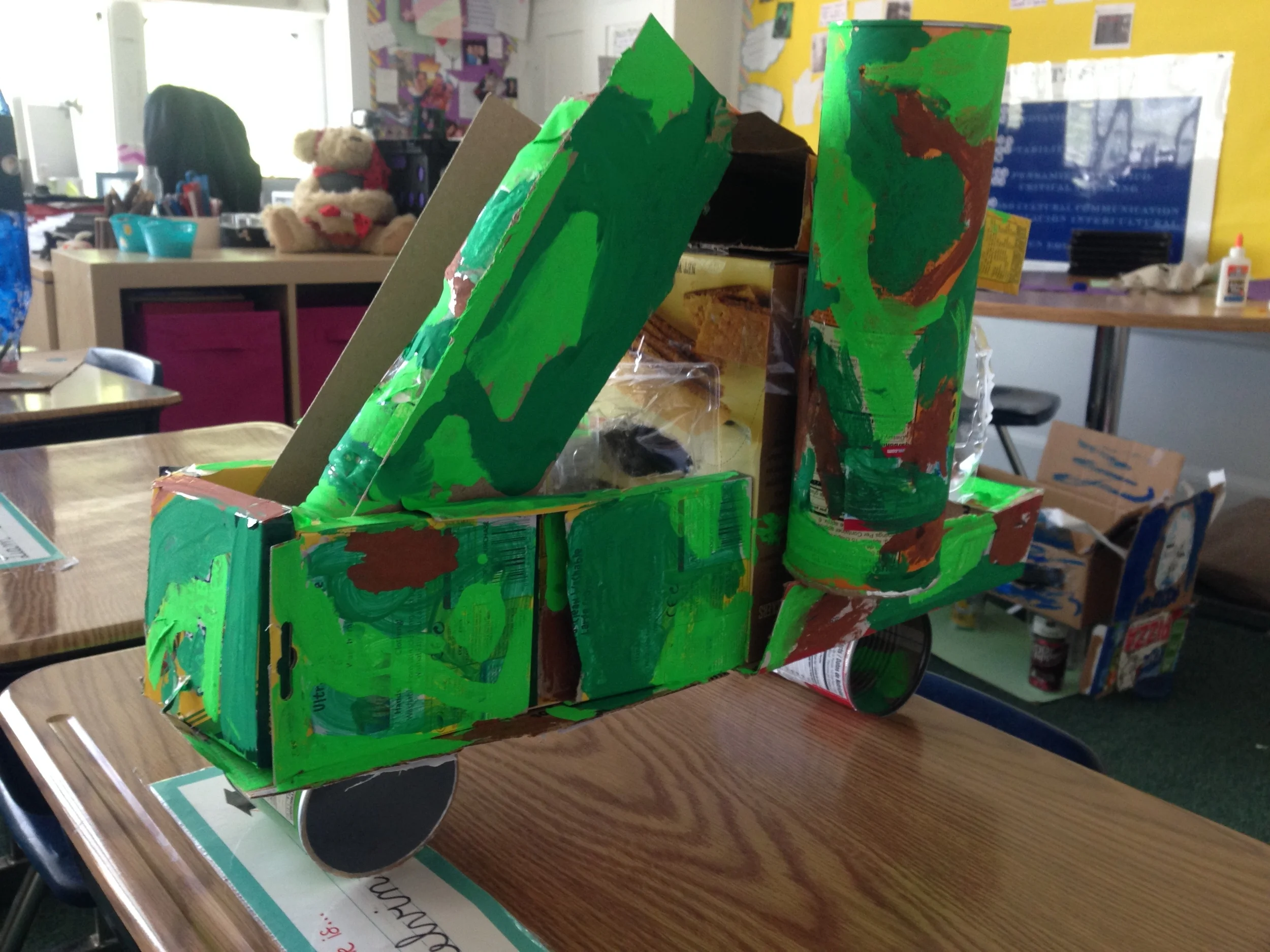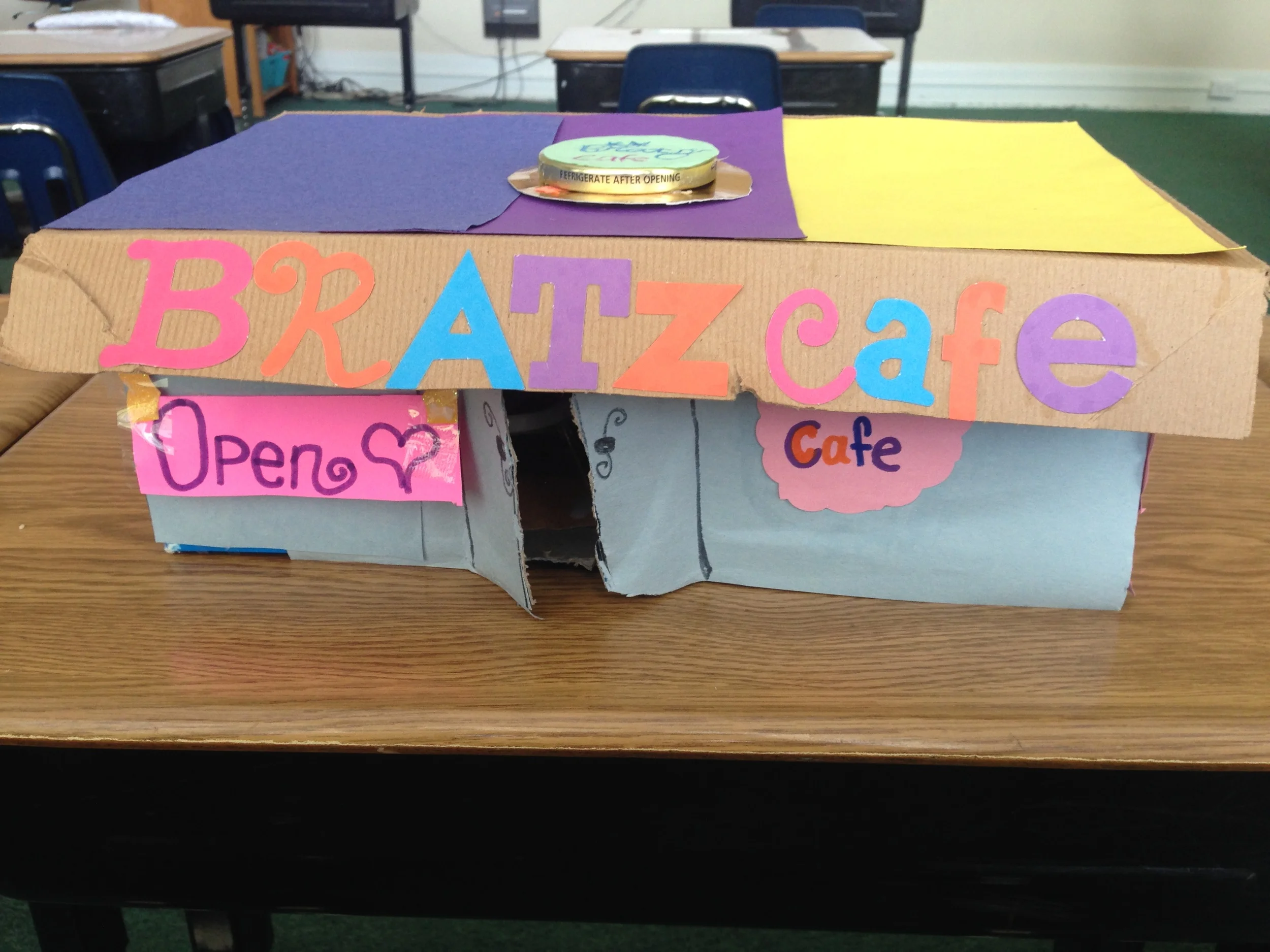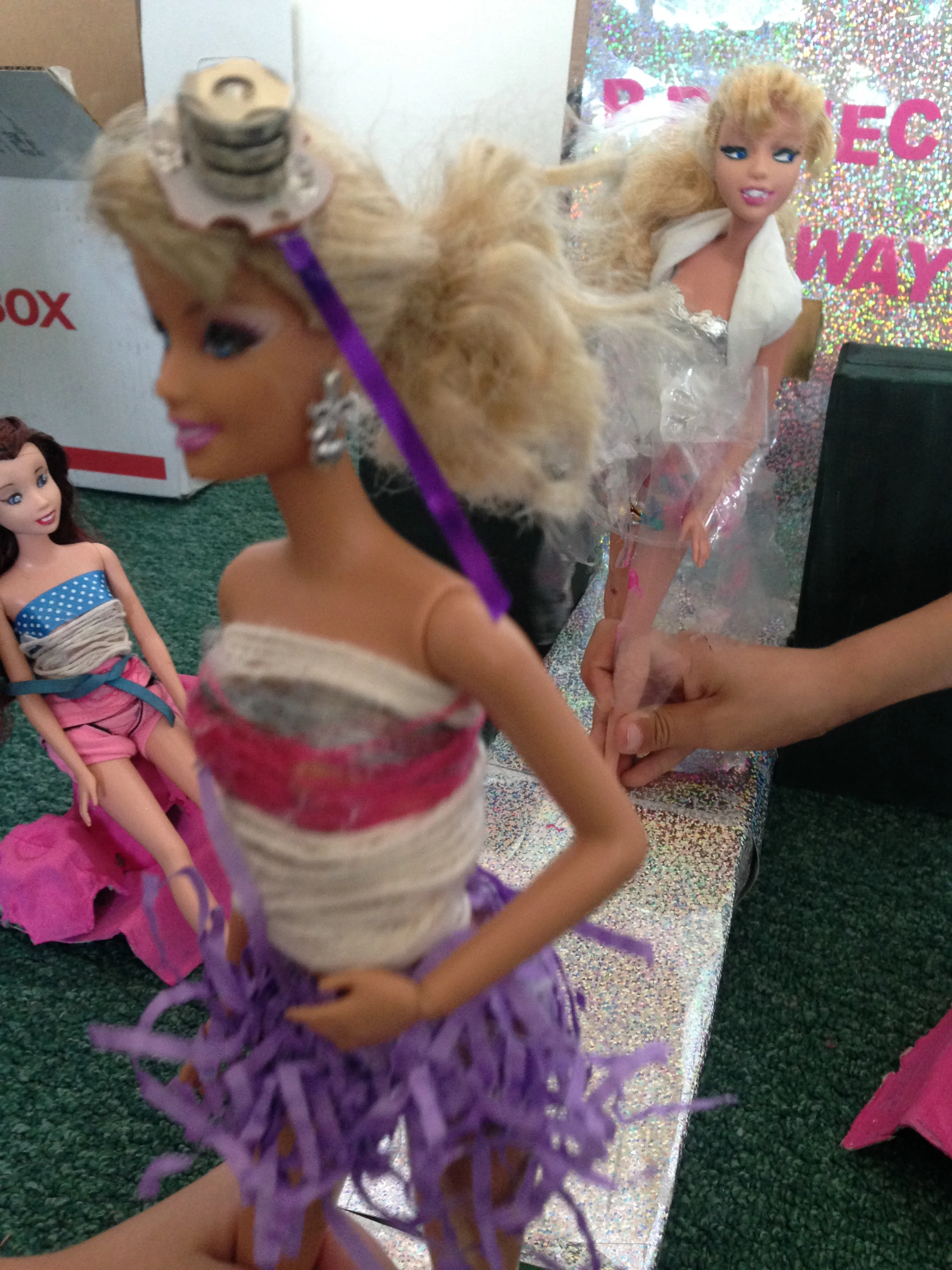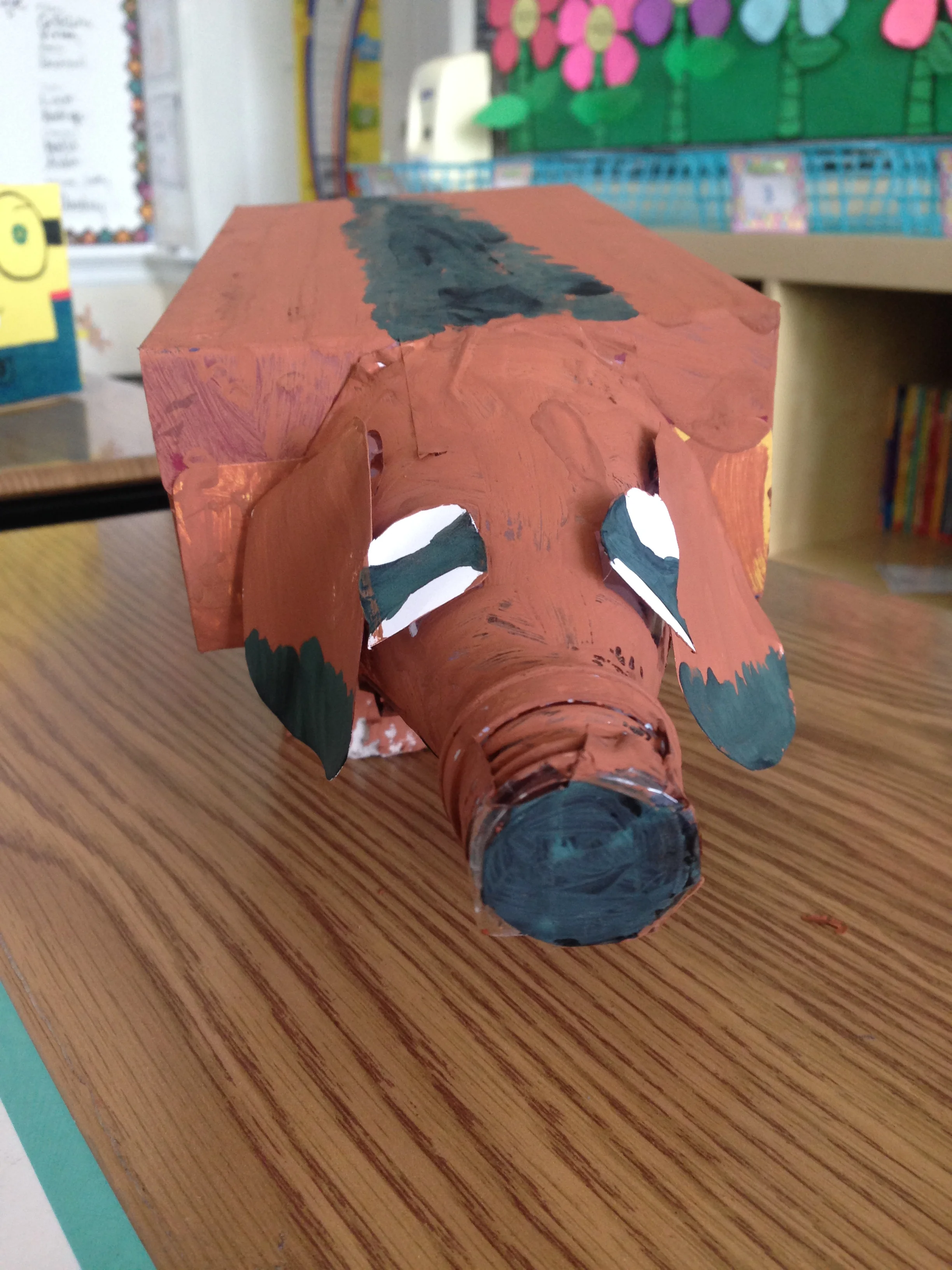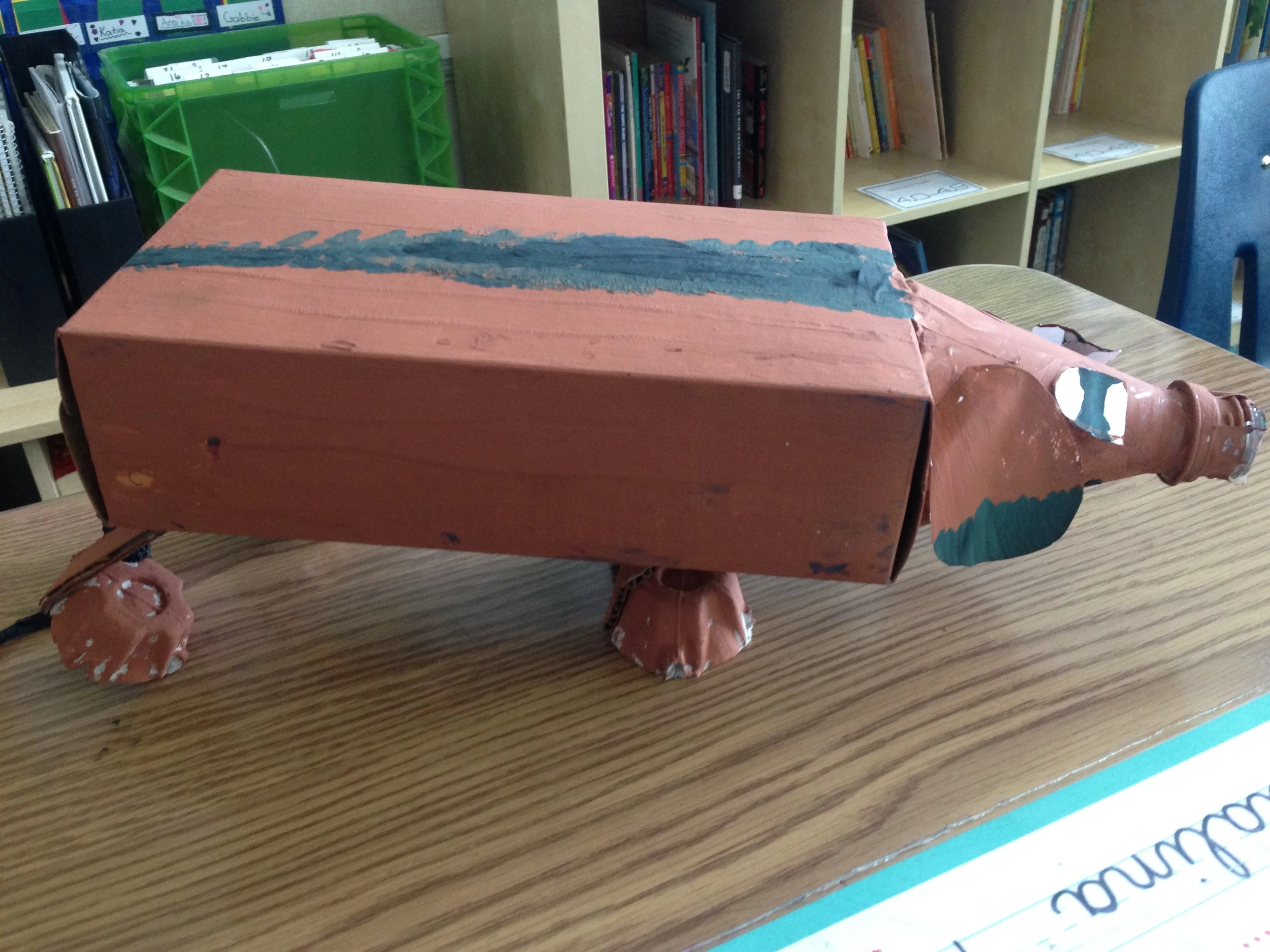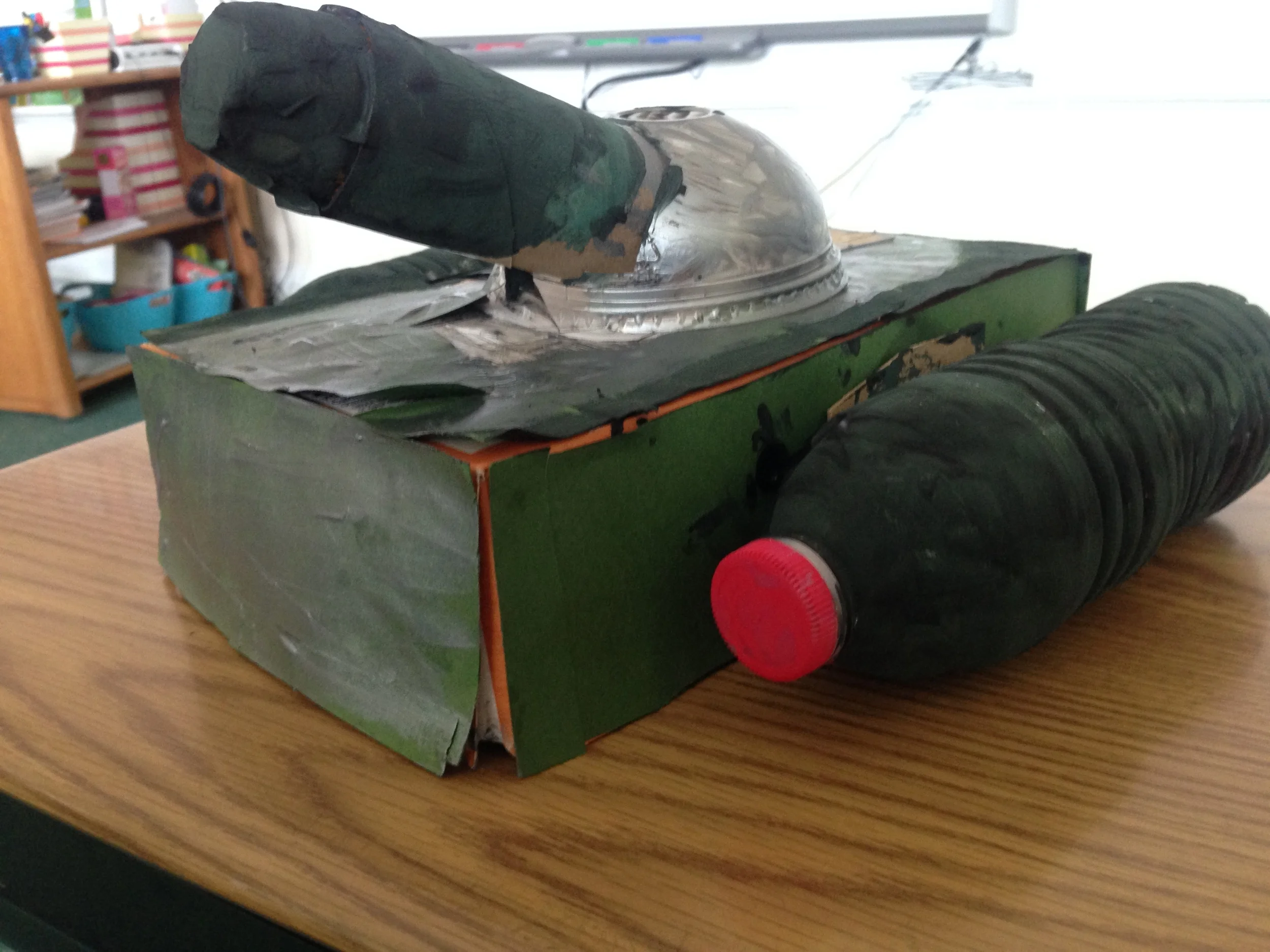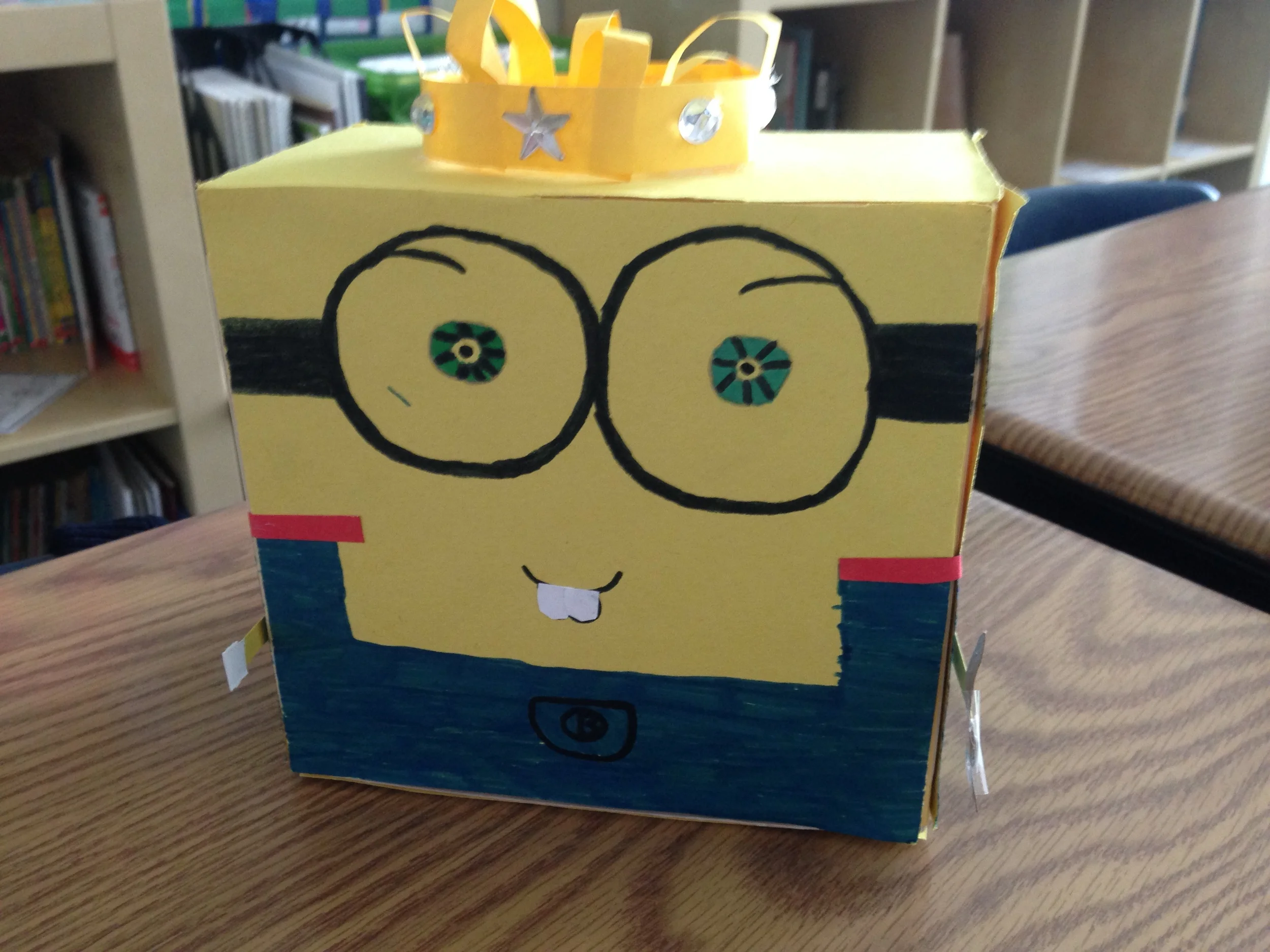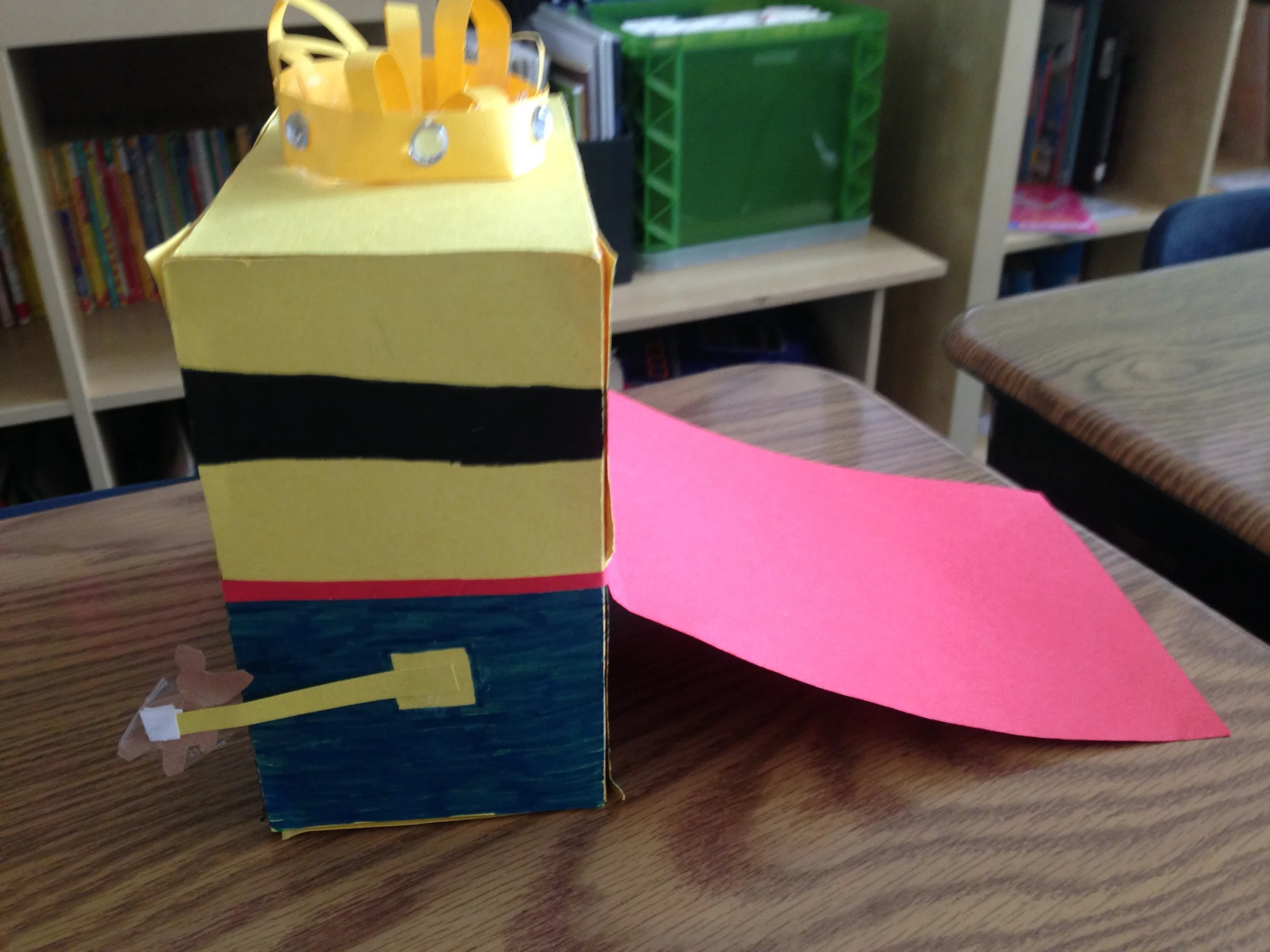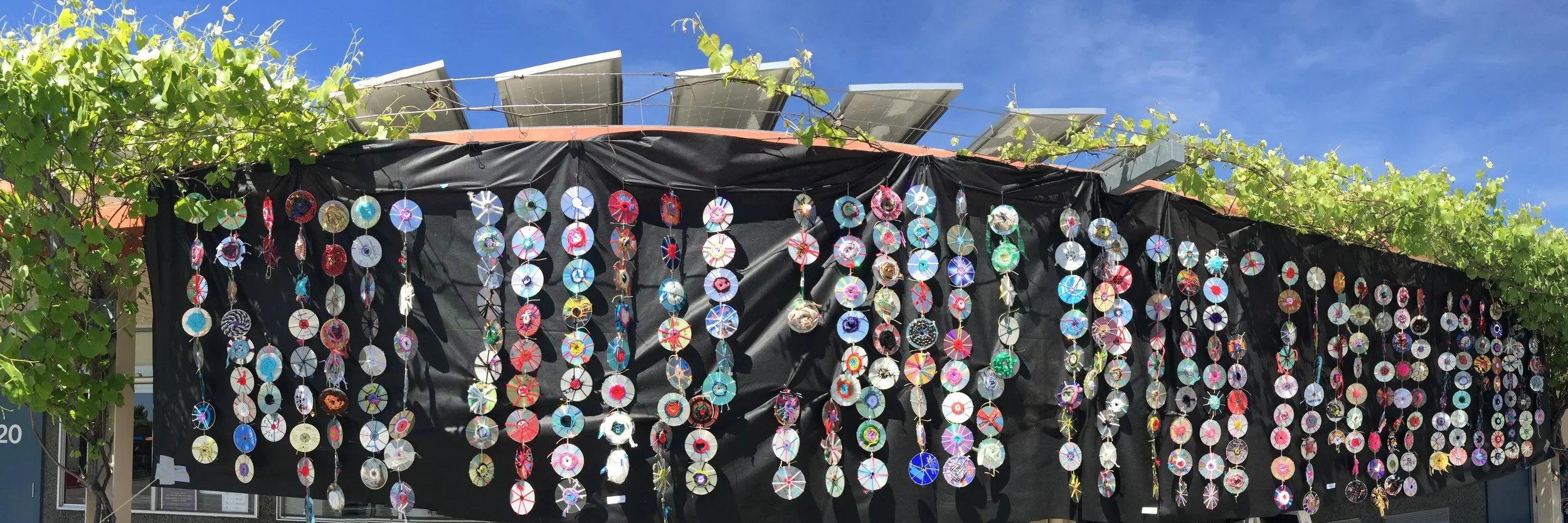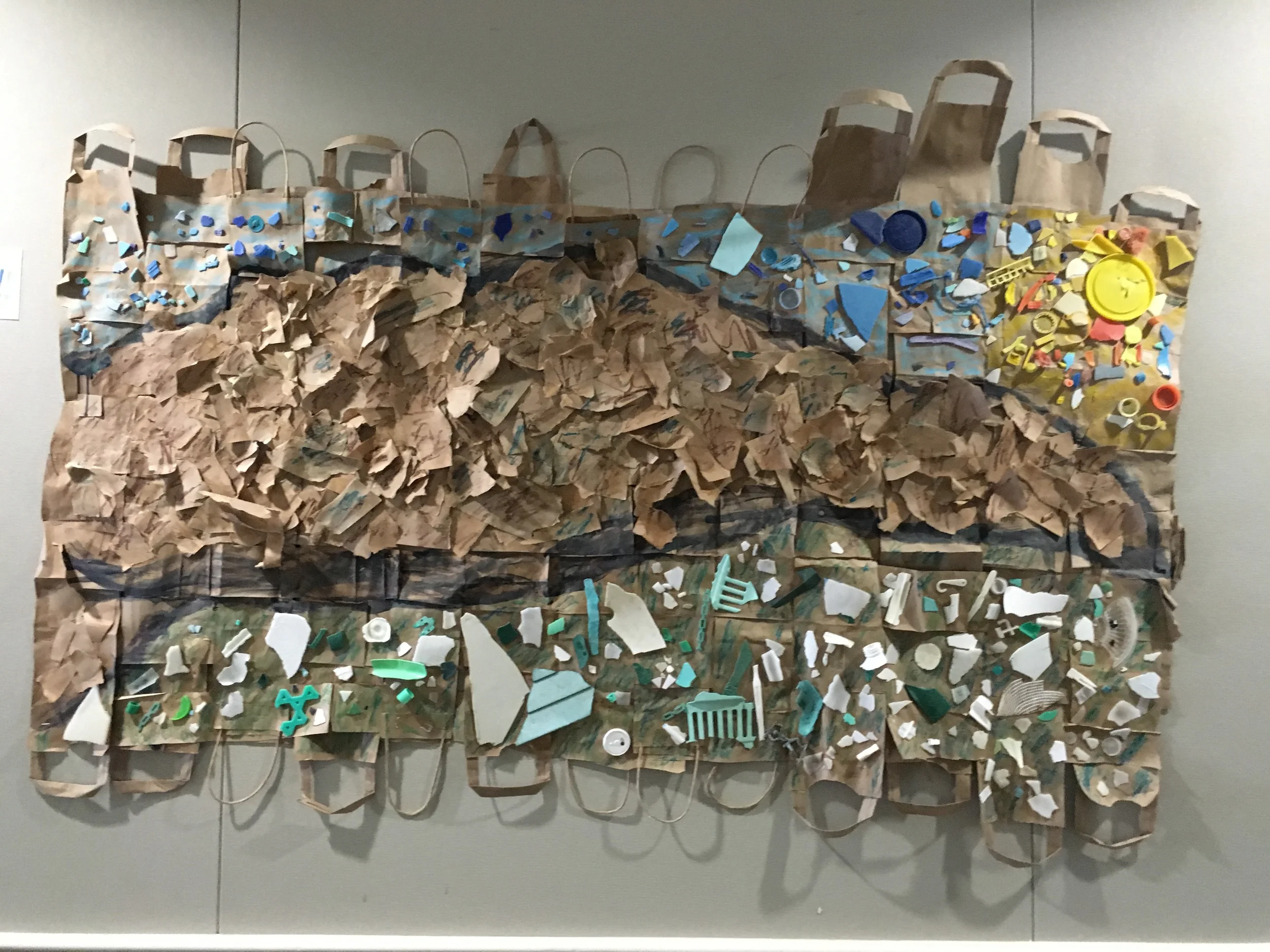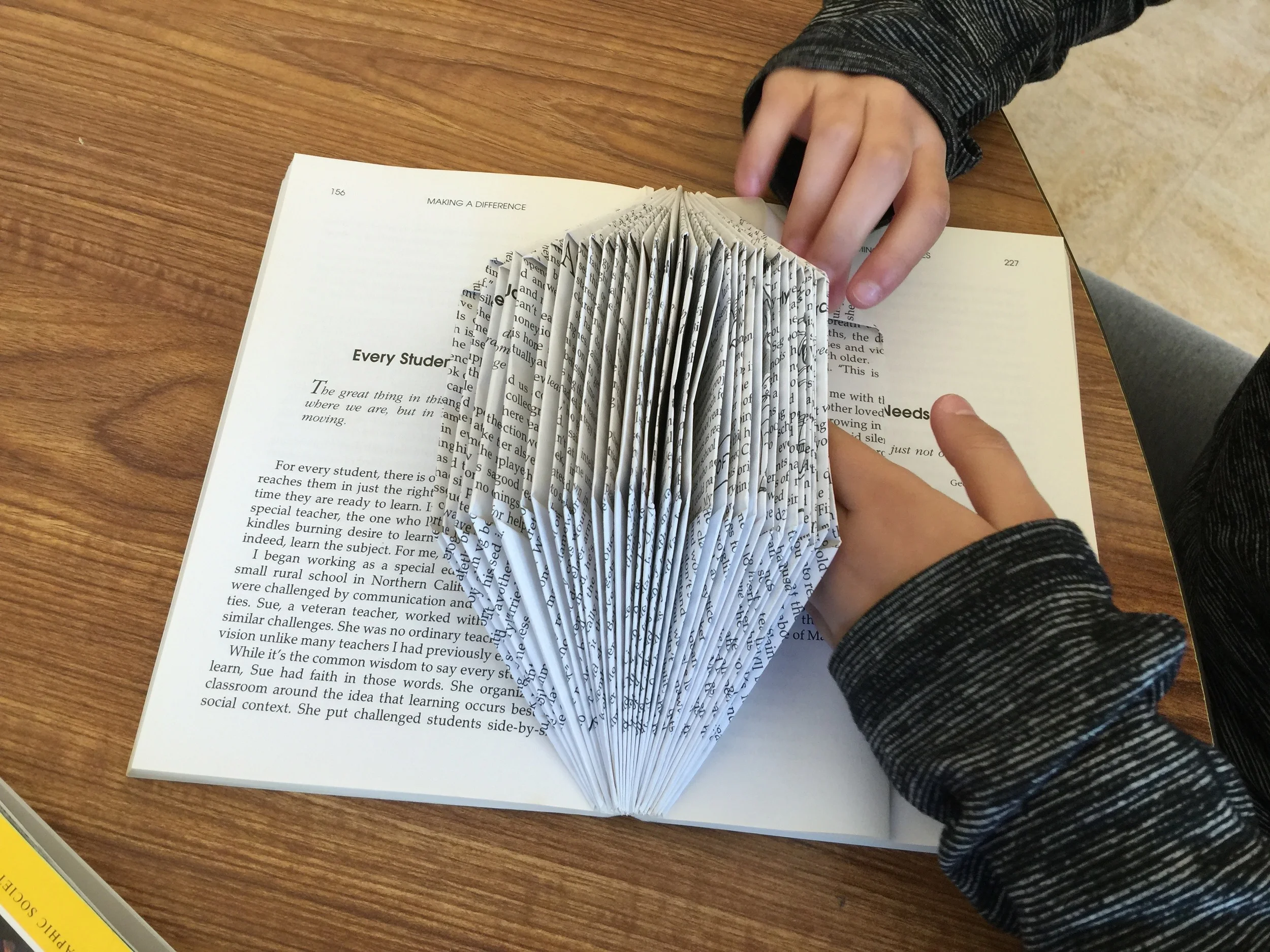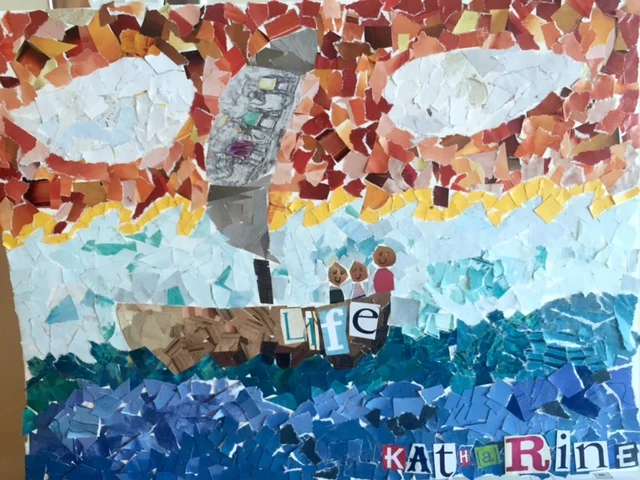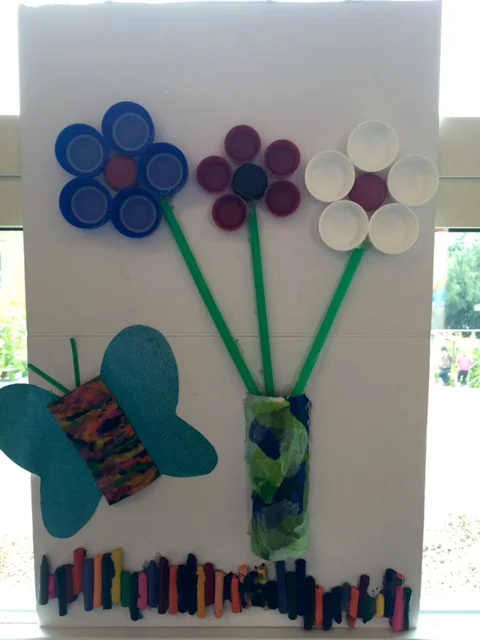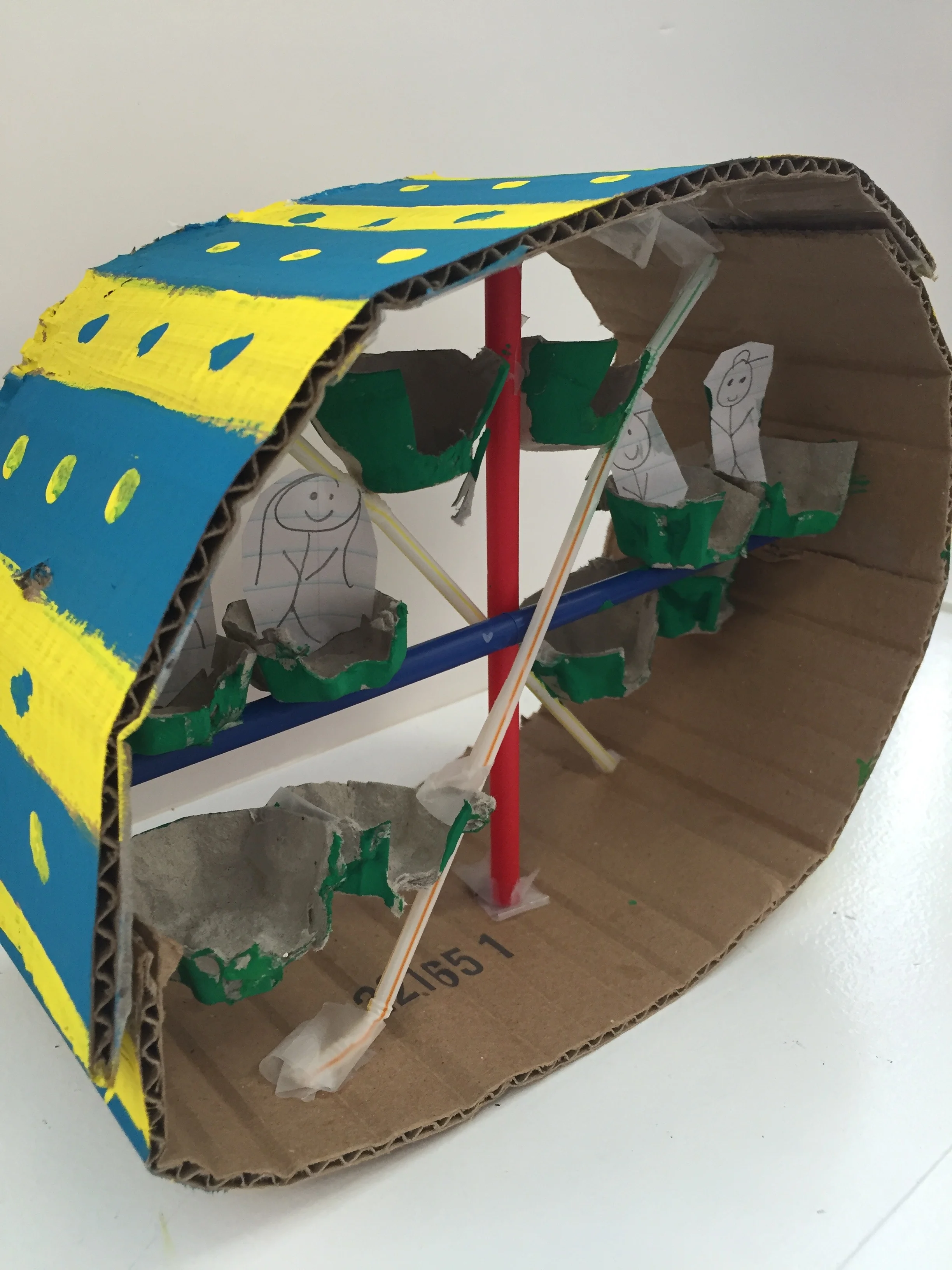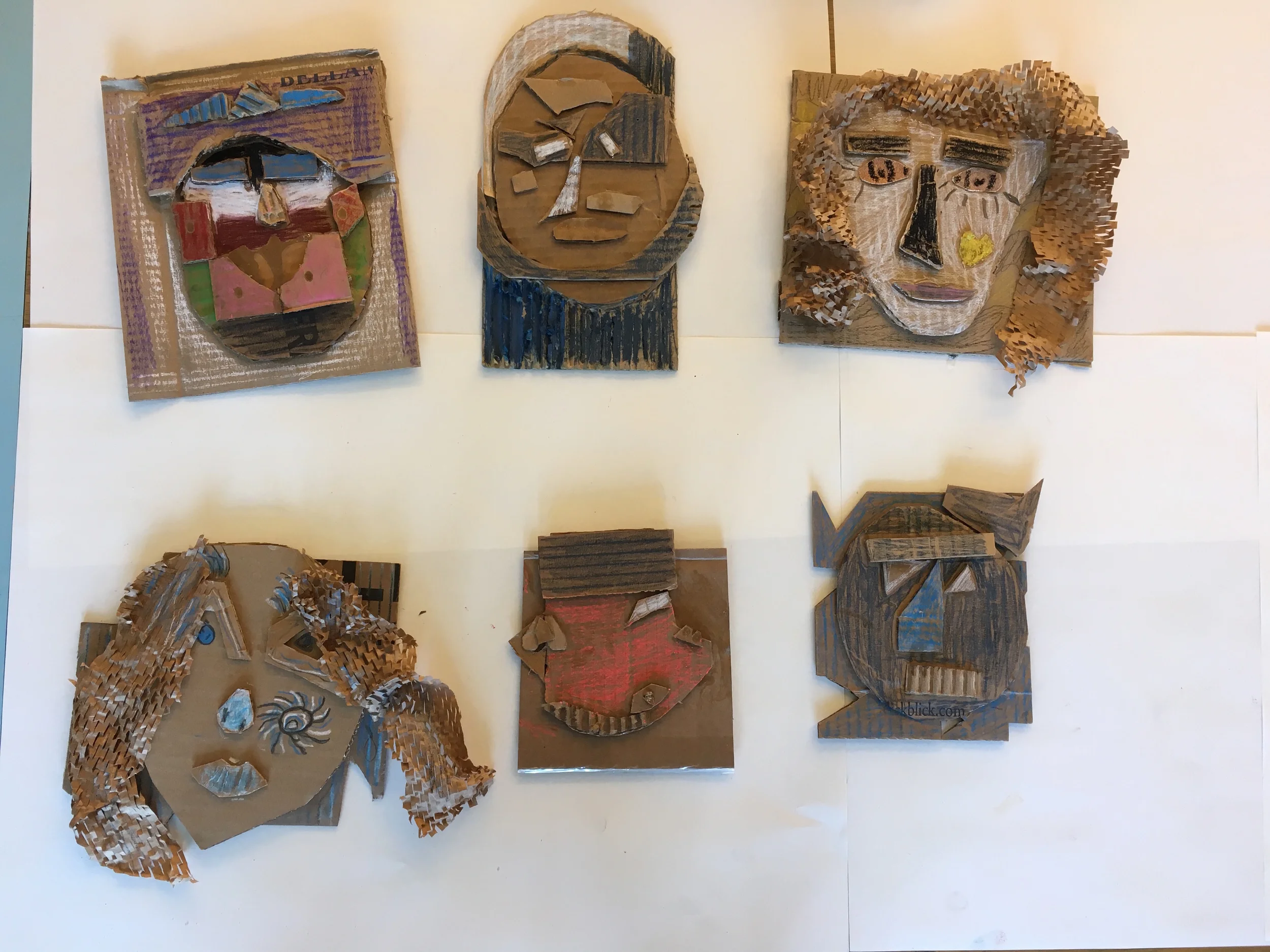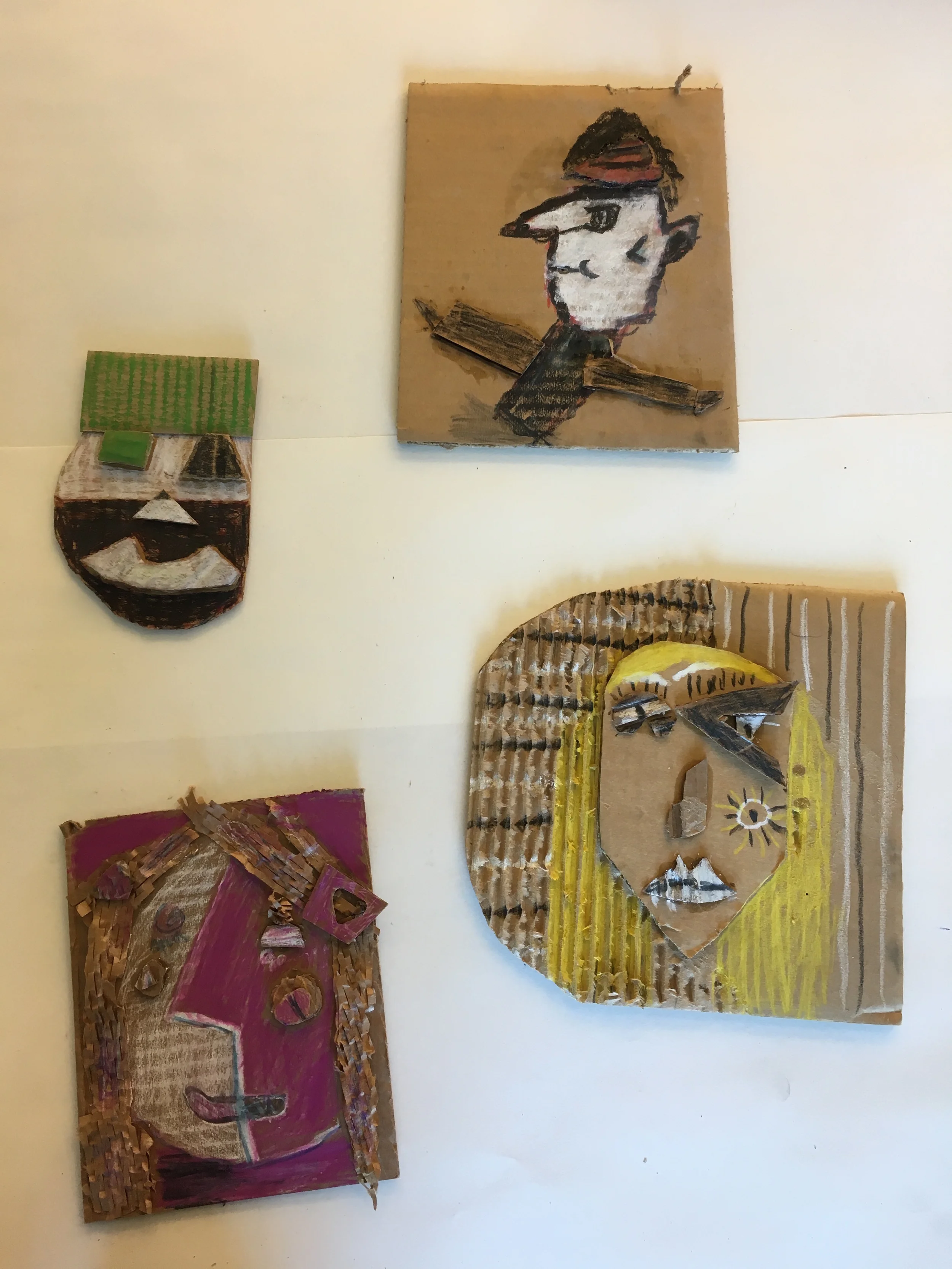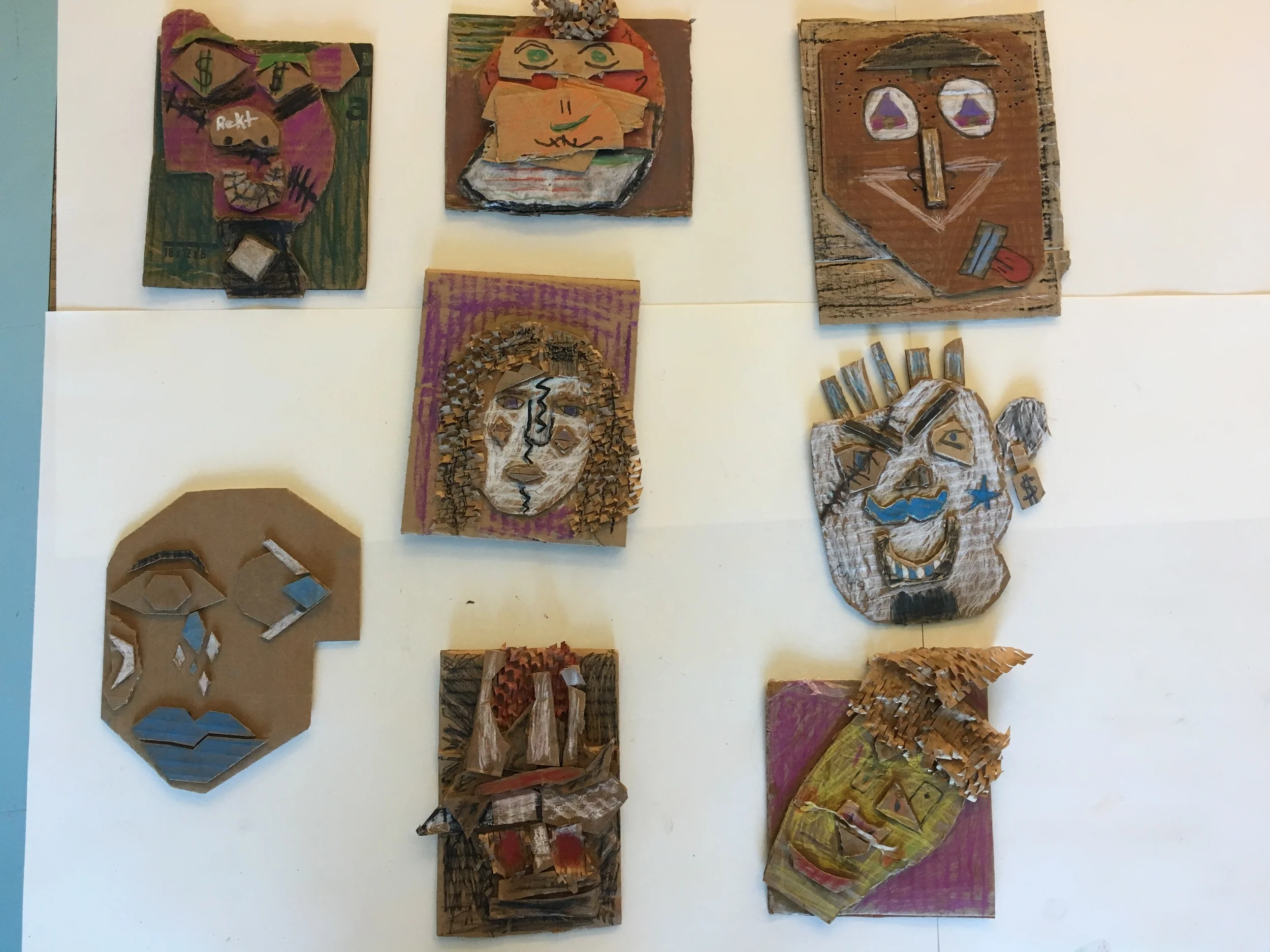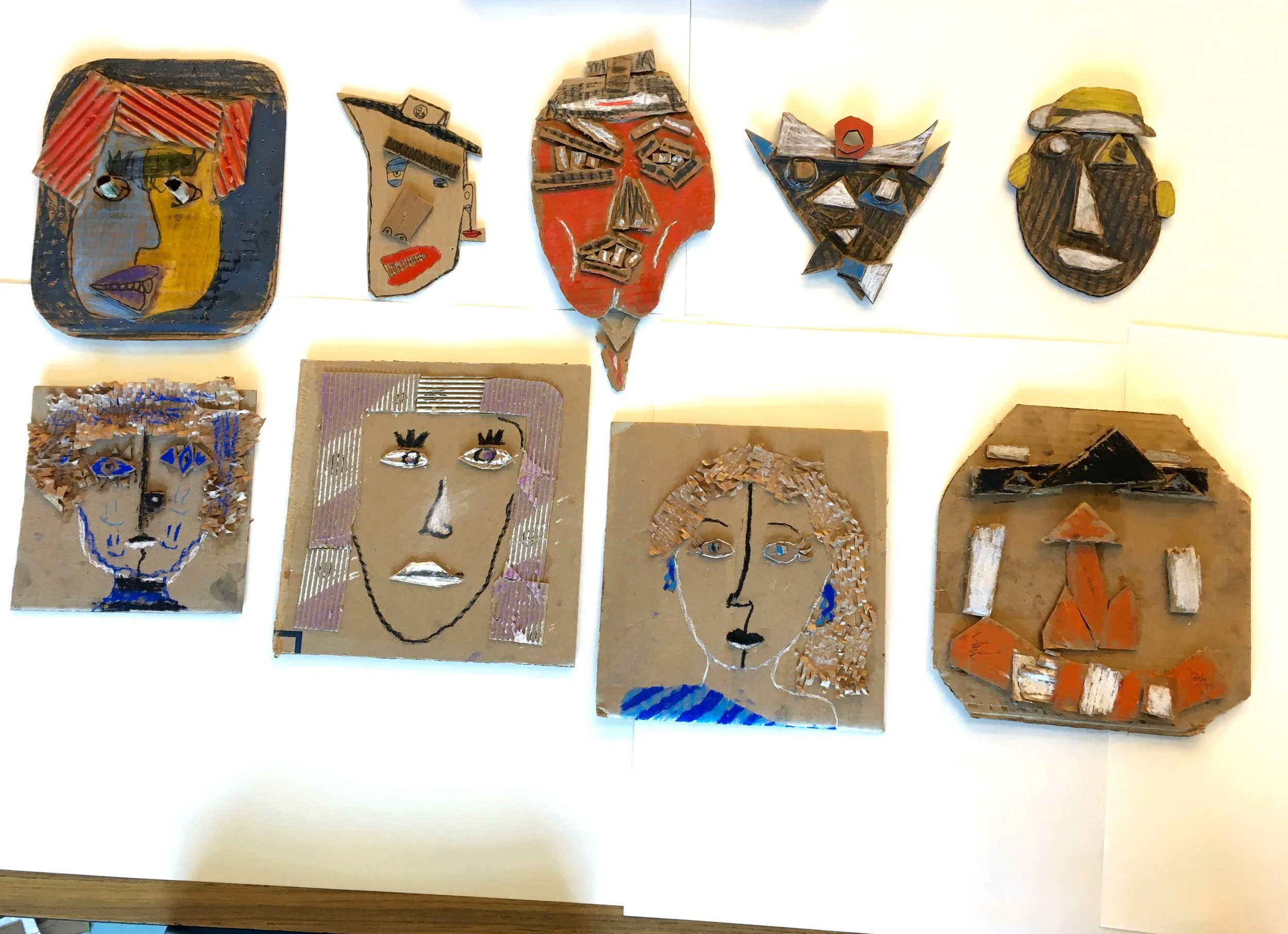Recycled Materials Art Competition: 2016 Participants
/Our First Annual Recycled Materials Art Competition was a huge success, and we are grateful to the many students and teachers who participated!
The range of inspired projects was astounding, from twisting paper branches to surrealist portraits made of cardboard; robots made of old tin to colorful sculptures. Suffice it to say, we were impressed! The judges had an incredibly difficult time choosing winners.
This post showcases all of the amazing work we received, and the thoughtful lessons that went into the process. We hope you enjoy this amazing collection of art created by students right here in Marin County!
Bacich Elementary, TK/Kindergarten Classes
Teacher: Barbara Libby-Steinmann
"TK and Kindergarten students practiced scissor cutting skills in altering a shopping size paper bag to shape a tree. Students used their hands to twist and shape the cut paper bag into branches and interesting looking trees. Upcycled flower pots were used as a base to hold up the paper tree sculptures.
Gustave Klimt's "The Tree of Life" (Art Nouveau) painting was the inspiration for decorating the paper tree sculptures. Students used recycled gold wrapping paper and other textured paper scraps to decorate their paper trees and add a flavor of the "Art Nouveau" era."
Reed Elementary, Kindergarten
Teacher: Sarah Vattuone
"The kindergarten students of Mrs. Vattuone’s class at Reed School were excited to create this Recycled Art Project. We frequently talk about was to reduce and conserve at school and home. The “Creation Station” at choice time is a favorite activity for the students in our class. Blending these topics together encouraged students to help the environment, have fun, and create something out of materials that would’ve normally gone to waste.
Students brought in cylinders from home and searched at school for cylinder shaped. We have been learning about three-dimensional shapes and what a great way to reinforce this shape! The cylinders ranged from coffee cup lids, paper towel rolls, chip cans, yogurt cups, to oatmeal containers. We sorted them by type, by size, and we counted them by twos, fives, and tens. All together we collected over 70 cylinders. Although not all cylinders made it into the project, the ones that were not included were recycled properly.
After sorting the materials, we reviewed how to make colors of the rainbow using just the primary colors, red, yellow and blue. We mixed the acrylic paints in hues on the color wheel from red to purple. Then each cylinder was painted inside and out using different hues. Once the cylinders were dried, the students built the structure using painter’s tape. Rainbows and colors have had an overarching theme at Reed School this year, and mixing primary colors is one of our favorite activities. One of our favorite songs to sing is “I Can Sing a Rainbow” and the students feel that this piece reminds them of the song and how bright and cheerful kindergarten makes them feel. They’ve decided to name it “I Can Build A Rainbow.”"
Bacich Elementary, 1st Grade
Teacher: Barbara Libby-Steinmann
"What shall we do with all this cardboard and packaging material that stacks up in every household or garage? Have you ever wondered what to do with random bottle caps, buttons, drinking straws, plastic forks, ribbons and other silly items? The Bacich 1st grade students upcycled all of this "trash" into fun and colorful 3D portraits.
Students got their inspiration from portraits by Pablo Picasso. Students cut, shaped, and glued a variety of cardboard pieces in a cubistic arrangement. Picasso often added a clue about the person he portrayed. Students experimented with adding a clue element to their portraits; i.e. glasses, freckles, eye color, birth mark, neckless, hat etc. The application of additional recycled materials made these portraits one of a kind art pieces."
The Cove School, 2nd Grade
Kerry Mason
"The students studied both realistic portraiture and abstract portraiture. They viewed artwork by Frida Kahlo and Pablo Picasso. They were to use egg cartons, colored recycled poster board, and various other supplies such as paper straws, construction paper and yarn to create an abstracted portrait. They glued down egg carton pieces with glue and drew on additional features with sharpies and crayons. The students brought in egg containers from home and the rest of they supplies were from materials salvaged by myself."
Bacich Elementary, 2nd Grade
Teacher: Barbara Libby-Steinmann
"Facts about plastic pollution: 50% of the plastic we use, we use just once and throw away. The average American throws away approximately 185 pounds of plastic per year. Americans throw away 35 billion plastic water bottles every year.
These facts are stunning, but even grander was the inspiration to not throw them away, but turn the plastic bottles into garden art. Each 2nd grade student was directed to cut a plastic bottle into three sections. Students used scissors to cut and shape the plastic into flowers and leaves. Depending on the type of plastic, students were able to mold, bend and shape the plastic with their hands. Students used twisty ties to assemble their mobiles. Students used acrylic Decor pens to decorate, color and add details."
Laurel Dell, 2nd Grade
Teacher: Mindy Green
"We made our sculptures by collecting the things that would go in a landfill from our lunches at school. We glued them to our lunch trays, painted them and gave them a title."
Coleman Elementary, 2nd Grade
Teacher: Karen Wilcox
"The project started with children going to the 'Junk Yard’ to gather recycled materials for their robot bodies, legs, arms, necks and heads. As the robots were engineered in any and all ways imaginable, more details started to appear. The kids were asked to build their own robots, while learning about form, gravity, weight, balance, structure and patience. It is a very challenging process but with a little reassurance, trial and error, most kids were more than successful."
The Cove Elementary, 3rd Grade
Teacher: Kerry Mason
"Students learned about Victorian houses and the special features that make up this unique style of architecture. Students collected many paper milk, soy, and creme containers. They first painted the houses white with white gesso and then chose a color to paint their house. Then sketched out their own design of a Victorian house that was painted and drawn on the milk carton. The milk cartons lined up together was intended to be reminiscent of a city block of San Francisco."
Saint Raphael School, 3rd Grade
Teacher: Francesca Previtali
Bacich Elementary, 3rd Grade
Teacher: Barbara Libby-Steinmann
"Yarn scraps, plastic shopping bags, bubble wrap, ribbons, onion sack netting and old CD's make up this dazzling work of upcycled art. This installation of upcycled CD's was composed of 450 woven masterpieces, three by each student, than strung together.
Students began by tying a piece of yarn to a CD, putting one end through the center hole, wrapping it tightly around the CD, repeating this action to create a loom with 7, 9, or even 11 spokes. Students wove a variety of recycled weft ( yarn or thread) over, and under the spokes, turning in a circle. Students tied the finished CD's together into rows of 9 to hang vertically.
This collaborative project really brought students together; they eagerly shared ideas, experimented with recycled materials, and helped each other. Students understood that by working together, they were able to create something stunning, and beautiful that they could not have created alone. It is this kind of pride satisfaction, and learning experience that lies at the heart of collaborative art-making."
Edna Maguire Green Team (3rd/4th)
Teacher: Carrie Morgan
"The Green Team at Edna Maguire consists of third and fourth graders. We meet to discuss and plan for various 'sustainability' issues around campus. As a result, we help in the garden, help during lunch, write little blurbs for our local children's newspaper, and create signage for school.
This is where this year's PaperSeed recycled art project came in! I brought in a large baggie filled with plastic I'd found on the beach. This was the inspiration. We wove strips of paper bags to create the background, tore more paper bags for the collage mountain, and glued the plastic onto the whole thing. It is HEAVY! It took us several meetings to make the entire thing, but we had a great time. And, it looks great in our hall, reminding everyone to stay 'green'."
Bacich Elementary, 4th Grade
Teacher: Barbara Libby-Steinmann
"An altered book is a form of mixed media artwork that changes a book from its original form into a different form, altering its appearance and/or meaning.
The fourth grade students absolutely loved creating their own book sculptures. Students were introduced to beginner book folding techniques. Students practiced 4 basic folds and used their creativity in applying the 4 folds in symmetrical patterns and repetitions. Students were also encouraged to invent their own folds and pattern of folds. There are a variety of book folding patters online which some students referred to.
Students used a magazine to practicing folds and patters. After practice, each student was directed to come up with a design plan to alter a book into an amazing piece of art."
Glenwood Elementary, 5th Grade
Teacher: Molly Blauvelt
Reed Elementary, 5th Grade
Teacher: Stephani Caldwell
Saint Raphael School, 5th Grade
Teacher: Sarah Jensen
"Fifth grade first began collecting different recycled materials at home and then brought them into the classroom. We collected materials from batteries, plastic water bottles, shaving cream bottles, egg cartons, and many more items they would normal toss or recycle.
After we had enough materials, the class was had a local Marin artist, Cynthia Jensen, visit their classroom to show her art pieces that she too had transformed from recycled materials, such as a fox mask made from an old bicycle seat. After being inspired, students chose one item from the "junk pile" and thought of how they could revamp that object. There wasn't much instruction other than to change it into something else, the students were excited and began their projects. Their wheels turned over the course of a couple weeks taping, gluing, and cutting until their projects were ready for the final touches.
We visited our art room to paint the pieces. It was a great project to see how students were dedicated and self-motivated to produce an art piece they had created from “garbage.” It was so nice to witness students using their innovation and critical thinking on a hands-on project. Students not only learned about art, but how they can make a difference, that if they could transform recyclables that they could transform the world."
The Cove School, 5th Grade
Teacher: Kerry Mason
"Students collected cardboard boxes and learned about the art movement Cubism and viewed several Cubist portraits done by Picasso. Students started out by sketching a cubist style portrait. Then, they worked to create their sculptural portraits by layering, cutting, and gluing cardboard pieces together. They added embellishments to their portraits by using oil pastels and sharpies."
